Salk scientists develop new means of discovery

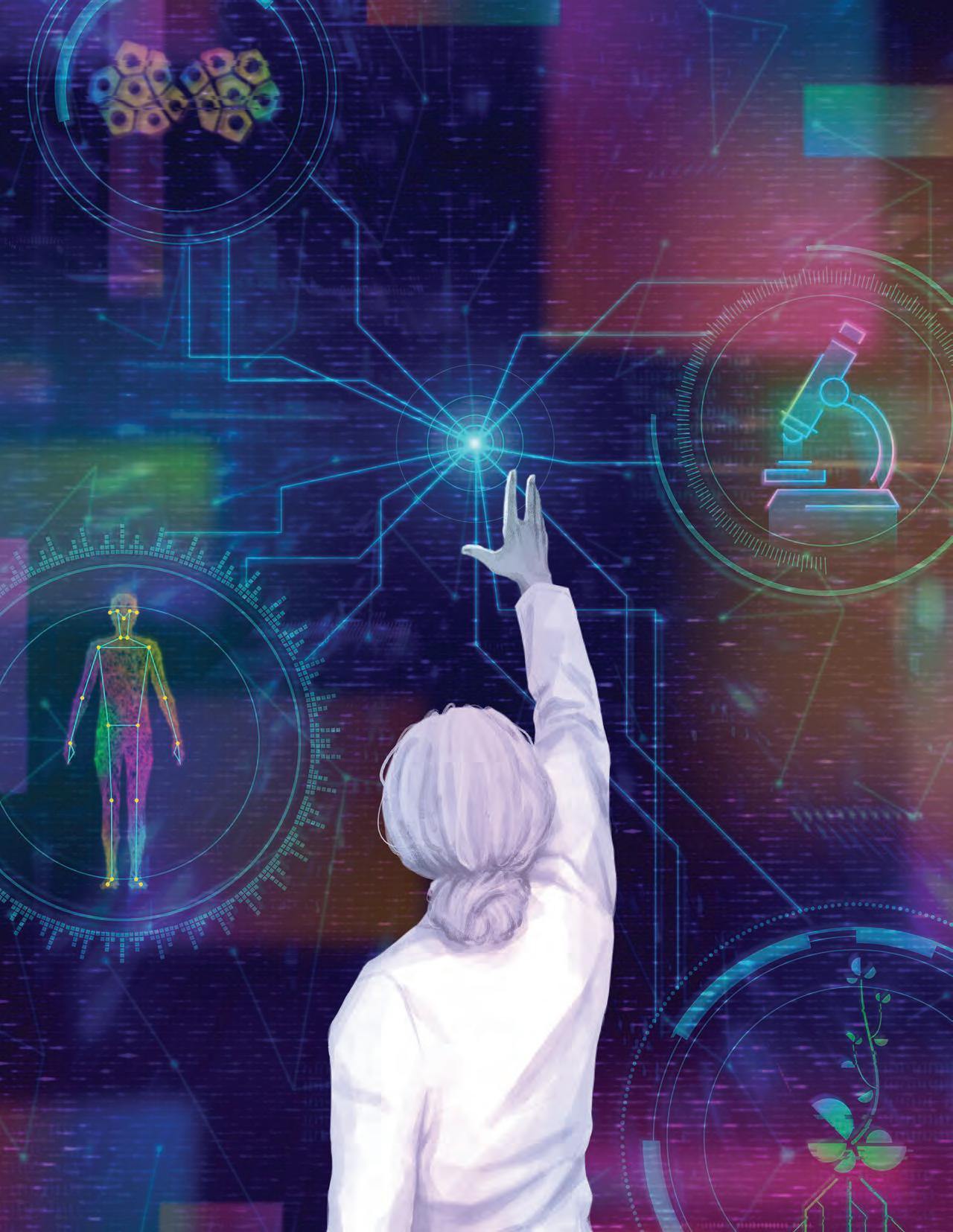

CONTENTS 02 DISCOVERIES 34 SPOTLIGHT 40 EVENTS FRONTIERS Leading with technology— Salk scientists develop new means of discovery 08 IN MEMORIAM Françoise Gilot— Art icon, author, and wife of Institute founder Jonas Salk 26 INSIGHTS Weiwei Fan— Life is energy 24 NEXT GEN Natanella Illouz-Eliaz— Recipe for a plant biologist: tomatoes, failure, and perseverance 30 Dannielle Engle— Putting patients first OBSERVATIONS 18 ALUMNI JOURNEYS Richard Heyman— From Salk to biotech and back 32 GRATITUDE Salk Institute receives $50 million from Hess Corporation to mitigate climate change through plant science 22 ON THE COVER: A scientist reaches toward a digital display with imagery representing technological advances in organoids, microscopes, motion tracking, and plant science.
Dear Friends,
When founder Jonas Salk and architect Louis Kahn conceived the design of the Salk Institute, they saw it not just as a workplace but as a gathering place for a community of scholars. From the open floor plan of the laboratories to the majestic Courtyard that unifies the site, the Institute was built to foster a sense of community among those who work here.
In the few short months of my tenure as Salk president, I am heartened to see the Institute’s community returning to campus, re-forming and strengthening bonds as the pandemic recedes farther in the rearview mirror with each passing day. Encouraging community is important to me not only on a personal and social level but on a pragmatic one as well. That’s because science requires collaboration to advance and improve the health of everyone in this world. Salk’s new Statement of Values expresses it succinctly: “Community enables us to harness the power of our collective talents.”
Collaboration among our community members is what makes Salk special. I believe it is the defining characteristic that sets our Institute apart and what will allow us to continue to honor the vision Jonas Salk had for this magnificent “cathedral of science.”
As you will see in this issue of Inside Salk, the future of Salk’s science is incredibly bright.
Within these pages, you’ll learn about how Salk scientists are devising new approaches in plant biotechnology to store atmospheric carbon within deeper root systems, addressing the challenge of pancreatic cancer with novel multicellular strategies, visualizing the activity of cells in real time with high resolution, and applying artificial intelligence to track fine motor movements and other behaviors.
Assistant Professor Dannielle Engle talks about her personal connection to pancreatic cancer, which changed her career trajectory. Staff Scientist Weiwei Fan describes how the ancient Chinese concept of qi inspires his work studying mitochondria, the powerhouses of the cell. Postdoctoral Researcher Natanella Illouz-Eliaz details her journey from tomato fields in Israel to mentorship and plant biology at Salk. And we learn about why Salk alumnus and Vice Chair of the Board of Trustees Richard Heyman feels so passionate about supporting the Institute’s future.
Additionally, we honor the life of prolific artist Françoise Gilot, widow of Jonas Salk.
In closing, I want to express how thrilled and honored I am for the opportunity to lead this world-renowned Institute in executing our bold vision. With your partnership, we will make the world a better place to live.
Warmest regards,
Gerald Joyce

Salk Institute President
PRESIDENT’S LETTER WWW.SALK.EDU 1 INSIDE SALK FALL 2023
“Collaboration among our community members is what makes Salk special. I believe it is the defining characteristic that sets our Institute apart and what will allow us to continue to honor the vision Jonas Salk had for this magnificent ‘cathedral of science.’”
Exploring the Brain: From Structure to Synapse
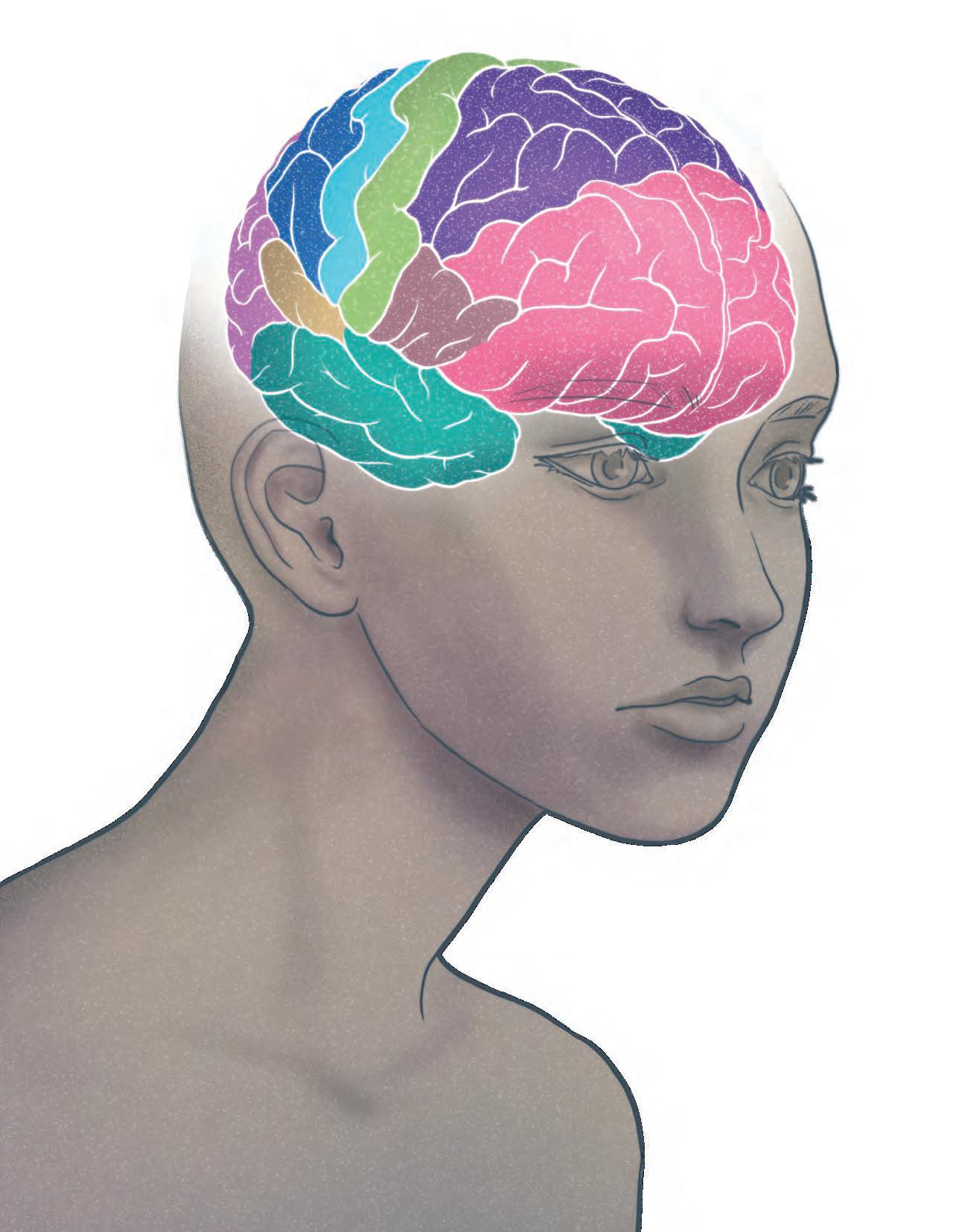
DISCOVERIES
2 INSIDE SALK FALL 2023 WWW.SALK.EDU
The pink model of the brain we remember from grade school may not seem like a complex feat of human evolution—but that is exactly what it is. Within that exterior, there are functional parts that work together to produce speech, imagination, hunger, and more. Networks of interconnected neurons, signaling molecules, and immune and support cells all influence the brain’s function. To fully understand the brain, scientists must consider everything from the overall structure to the tiniest molecule. At Salk, scientists approach the brain from all angles, asking questions such as what does it mean to be conscious? Which neurons communicate? How can one protein change brain activity? Study by study, these researchers are expanding our understanding of the brain to improve our foundational knowledge and develop more effective therapeutics for the future.

AI CHATBOT CHATGPT MIRRORS ITS USERS TO APPEAR INTELLIGENT
“Chatting with language models is like riding a bicycle. Bicycles are a wonderful mode of transportation—if you know how to ride one; otherwise, you crash. The same goes for chatbots. They can be wonderful tools but only if you know how to use them; otherwise, you end up being misled and in potentially emotionally disturbing conversations.”
NEURAL
Consciousness—the internal awareness that you exist—continues to captivate philosophers and neuroscientists alike. Insight into human consciousness can be gathered from the artificial intelligence (AI) language model ChatGPT. This trained computer chatbot can generate text, answer questions, provide translations, and learn based on the user’s feedback. Large language models like ChatGPT may have many applications in science and business, but how much do these tools understand what we say to them, and how do they decide what to say back?
Professor Terrence Sejnowski explored the relationship between the human interviewer and language models to uncover why chatbots respond in particular ways, why those responses vary, and how to improve them in the future.
PROFESSOR TERRENCE SEJNOWSKI

COMPUTATION 02/2023
3 INSIDE SALK FALL 2023 WWW.SALK.EDU
NOT ALL ITCHES ARE THE SAME, ACCORDING TO THE BRAIN
In addition to broader inquiry into consciousness, scientists also ask questions about neuron communication. Itch is a protective signal that animals use to prevent parasites from introducing potentially hazardous pathogens into the body. Itchiness due to something like a crawling insect is known as “mechanical” and is distinct from “chemical” itchiness generated by an irritant, such as a mosquito’s saliva if the mosquito were to bite a person’s arm. While both scenarios cause the same response (scratching), recent research by Professor Martyn Goulding, Associate Professor Sung Han, and colleagues has revealed that, in mice, a dedicated brain pathway drives the mechanical sensation and is distinct from the neural pathway that encodes the chemical sensation. Their findings open up new avenues for therapeutic interventions for patients who experience a range of chronic itch conditions, including atopic dermatitis and psoriasis.

HOW AGGRESSIONPROMOTING BRAIN PEPTIDE WORKS IN FRUIT FLIES

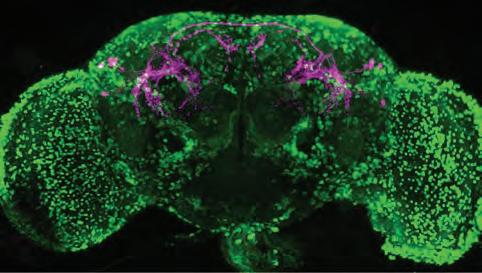
Tiny proteins and molecules impact neuron communication to alter brain activity. In addition to communicating via chemicals called neurotransmitters, the brain also uses proteins called neuropeptides. Though their importance is widely recognized, the way neuropeptides move around the brain and influence neurons has remained poorly understood—until now. Associate Professor Kenta Asahina and colleagues have found the variable influence that neuropeptides can have on brain activity, which illuminates how the brain communicates in flies—an important step to understanding the underlying causes of human conditions, like autism spectrum or attention deficit disorders.
THE JOURNAL OF NEUROSCIENCE 05/2023
NEURON 04/2023
A fruit fly brain showing male-specific tachykininergic neurons (magenta), which make the neuropeptide tachykinin, and neurons that express TkR86C (green), which receive tachykinin.
Mechanical-itch-responsive neuron (blue) located among cell nuclei (green) in the brainstem of a mouse.
“We may be looking at fruit flies, but the implications of our research extend far beyond them.”
DISCOVERIES NEUROSCIENCE 4 INSIDE SALK FALL 2023 WWW.SALK.EDU
ASSOCIATE PROFESSOR KENTA ASAHINA
Wearable microscopes advance spinal cord imaging in mice


The spinal cord acts as a messenger, carrying signals between the brain and body to regulate everything from breathing to movement. While the spinal cord is known to play an essential role in relaying pain signals, technology has limited scientists’ understanding of how this process occurs on a cellular level. Now, Associate Professor Axel Nimmerjahn; co-first authors Pavel Shekhtmeyster, Erin Carey, and Daniela Duarte; and colleagues have created wearable microscopes to enable unprecedented insight into the signaling patterns that occur within the spinal cords of mice. The lab’s technological advancement will help researchers better understand the neural basis of sensations and movement in healthy and disease contexts, such as chronic pain, itch, amyotrophic lateral sclerosis (ALS), or multiple sclerosis (MS).
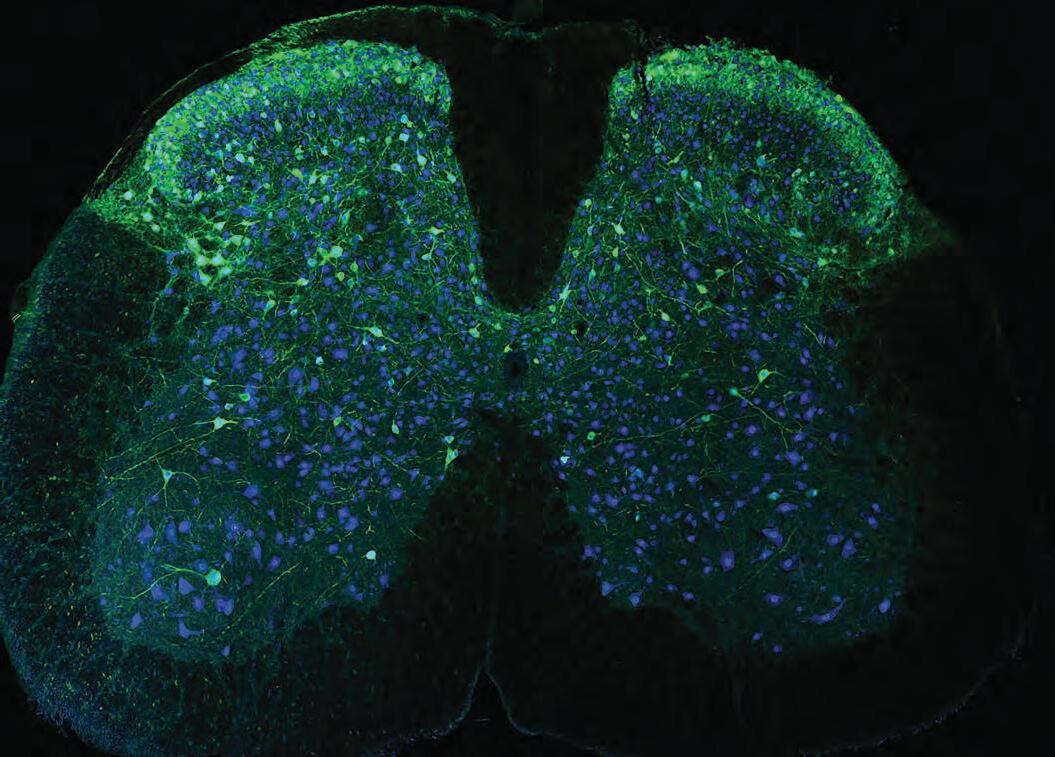 Above: Neurons in the spinal cord (blue), including those that send signals about pain (green), captured using one of the new wearable microscopes.
Above: Neurons in the spinal cord (blue), including those that send signals about pain (green), captured using one of the new wearable microscopes.
NATURE COMMUNICATIONS/ NATURE BIOTECHNOLOGY
From left: Daniela Duarte, Erin Carey, Axel Nimmerjahn, and Pavel Shekhtmeyster.
03/2023
“These new wearable microscopes allow us to see nerve activity related to sensations and movement in regions and at speeds inaccessible by other high-resolution technology. Our wearable microscopes fundamentally change what is possible when studying the central nervous system.”
NEUROSCIENCE 5 INSIDE SALK FALL 2023 WWW.SALK.EDU
ASSOCIATE PROFESSOR AXEL NIMMERJAHN
New way to model human brain immune cells and neurological disorders

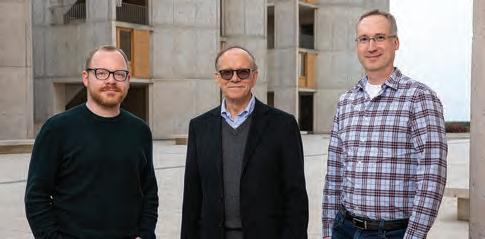

Situated at the intersection of the human immune system and the brain are microglia, specialized brain immune cells that play a crucial role in development and disease. Although the importance of microglia is undisputed, modeling and studying them has remained a difficult task. To overcome this barrier, Professor Rusty Gage, Associate Professor Axel Nimmerjahn, co-first authors Simon Schafer and Abed Mansour, and colleagues developed an organoid model—a three-dimensional collection of cells that mimics features of human tissues. This model allows researchers to study human microglial development and function for the first time in living human-derived tissue. The scientists also examined patient-derived microglia from children with a type of autism spectrum disorder to determine whether brain environment influences the development of more reactive microglia.

CELL 05/2023
Mitochondria power-supply failure may cause age-related cognitive impairment
The brain is divided into areas, each containing many millions of neurons connected across thousands of synapses. These synapses, which enable communication between neurons, depend on even smaller structures: message-sending boutons (swollen bulbs at the branch-like tips of neurons), message-receiving dendrites (complementary branch-like structures for receiving bouton messages), and power-generating mitochondria. Professor John Reynolds, co-first authors Courtney Glavis-Bloom and Casey Vanderlip, and colleagues found that brains lose synapses as they age and the synapses that remain show a breakdown in coordination between the size of boutons and the mitochondria they contain. Their findings open an entirely new way of thinking about cognitive decline that could lead to new targets for future therapeutics.
 Left: An immune brain cell (microglia) in a human brain.
Right: Microglia in the novel organoid model with a human brain-like environment. The cells are almost indistinguishable.
From left: John Reynolds, Courtney Glavis-Bloom, and Casey Vanderlip.
Normally, the different parts of the synaptic complex grow and shrink together. The researchers found evidence that this process can go awry in aging, which may contribute to cognitive impairment.
Left: An immune brain cell (microglia) in a human brain.
Right: Microglia in the novel organoid model with a human brain-like environment. The cells are almost indistinguishable.
From left: John Reynolds, Courtney Glavis-Bloom, and Casey Vanderlip.
Normally, the different parts of the synaptic complex grow and shrink together. The researchers found evidence that this process can go awry in aging, which may contribute to cognitive impairment.
DISCOVERIES
From left: Simon Schafer, Rusty Gage, and Axel Nimmerjahn.
NEUROSCIENCE
WATCH 6 INSIDE SALK FALL 2023 WWW.SALK.EDU
FRONTIERS IN AGING NEUROSCIENCE 04/2023
www.salk.edu/gage202308
New drug combination reduces lung tumors in mice

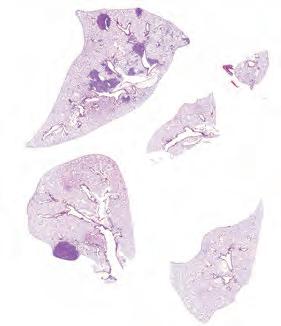

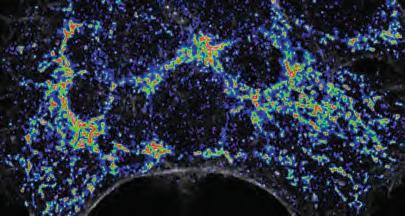
Cancer treatments have long been moving toward personalization—finding the right drugs that work for a patient’s unique tumor, based on specific genetic and molecular patterns. Many of these targeted therapies are highly effective but aren’t available for all cancers, including non-small cell lung cancers (NSCLCs) that have an LKB1 genetic mutation. A new study led by Professor Reuben Shaw and collaborators from Northwestern University revealed FDA-approved trametinib and entinostat (which is currently in clinical trials) can be given in tandem to produce fewer and smaller tumors in mice with LKB1-mutated NSCLC. The findings may lead to clinical trials to test the new regimen in humans. SCIENCE 04/2023


Cracking the case of mitochondrial repair and replacement in metabolic stress
Professor Reuben Shaw has spent nearly two decades piecing together how the cell responds to metabolic stress, which occurs when cellular energy levels dip. Whether energy levels fall because the cell’s powerhouses (mitochondria) are failing or due to a lack of necessary energymaking supplies, the response is the same: get rid of the damaged mitochondria and create new ones. Now, Shaw, first author Nazma Malik, and colleagues crack the case on this process of removal and replacement, finding that a protein called FNIP1 is the critical link between a cell sensing low energy levels and eliminating and replacing damaged mitochondria. The finding has implications for better understanding healthy aging, cancer, neurodegenerative diseases, and more.
 Left: Lung tissue of mice with LKB1-mutated non-small cell lung cancer. Right: Lung tissue after being treated with both trametinib and entinostat showing smaller and fewer tumors.
Left: Lung tissue of mice with LKB1-mutated non-small cell lung cancer. Right: Lung tissue after being treated with both trametinib and entinostat showing smaller and fewer tumors.
ADVANCES
Mitochondria in the cell during metabolic stress. Large increases in the number of mitochondria (red), medium increases (green), and small increases (blue). CANCER
METABOLISM
SCIENCE
03/2023
7 INSIDE SALK FALL 2023 WWW.SALK.EDU
REUBEN SHAW NAZMA MALIK
LEADING WITH TECHNOLOGY
Salk scientists develop new means of discovery

FRONTIERS 8 INSIDE SALK FALL 2023 WWW.SALK.EDU
We don’t often talk about it in these terms, but Jonas Salk’s 1955 polio vaccine—the first to be safe and effective— was a pioneering technology. Before that, only a handful of others existed, including a 1796 smallpox vaccine, an 1885 rabies vaccine, and a 1948 combined diphtheria, tetanus, and pertussis vaccine. None reached the scale of Salk’s, whose clinical trial involved more than 1.8 million children in the United States.
In developing the vaccine, Salk applied scientific knowledge to a societal problem: the annual devastation of polio, an infectious disease that primarily killed or disabled children. Thus, from the very beginning, the Salk Institute’s success has been based on its embrace of innovative technology to address humanity’s challenges.
Today, scientific research is at an inflection point driven by advances in technology and computational science. This provides new opportunities for discovery. Salk is positioned to take full advantage of the breakthroughs that computational science will enable by building the 100,000-square-foot Joan and Irwin Jacobs Science and Technology Center to house new faculty members with unique expertise, leading-edge computational and engineering technologies, and more collaborative spaces in which to do the work.
In the meantime, Salk Institute scientists are continuing to push technological limits to—among other things—store more excess atmospheric carbon in deeper plant roots, study pancreatic cancer more accurately, follow cellular activity in real time more clearly, and track all kinds of motion more easily.
The Institute’s technological advances are allowing Salk and other researchers worldwide to ask—and answer—critical questions about aging, neuropsychiatric disease, cancer, immunology, climate change, and more. In doing so, they are facilitating the future of scientific and biomedical discovery.


9 INSIDE SALK FALL 2023 WWW.SALK.EDU
Salk Ideal Plants®: storIng carbon more deeply
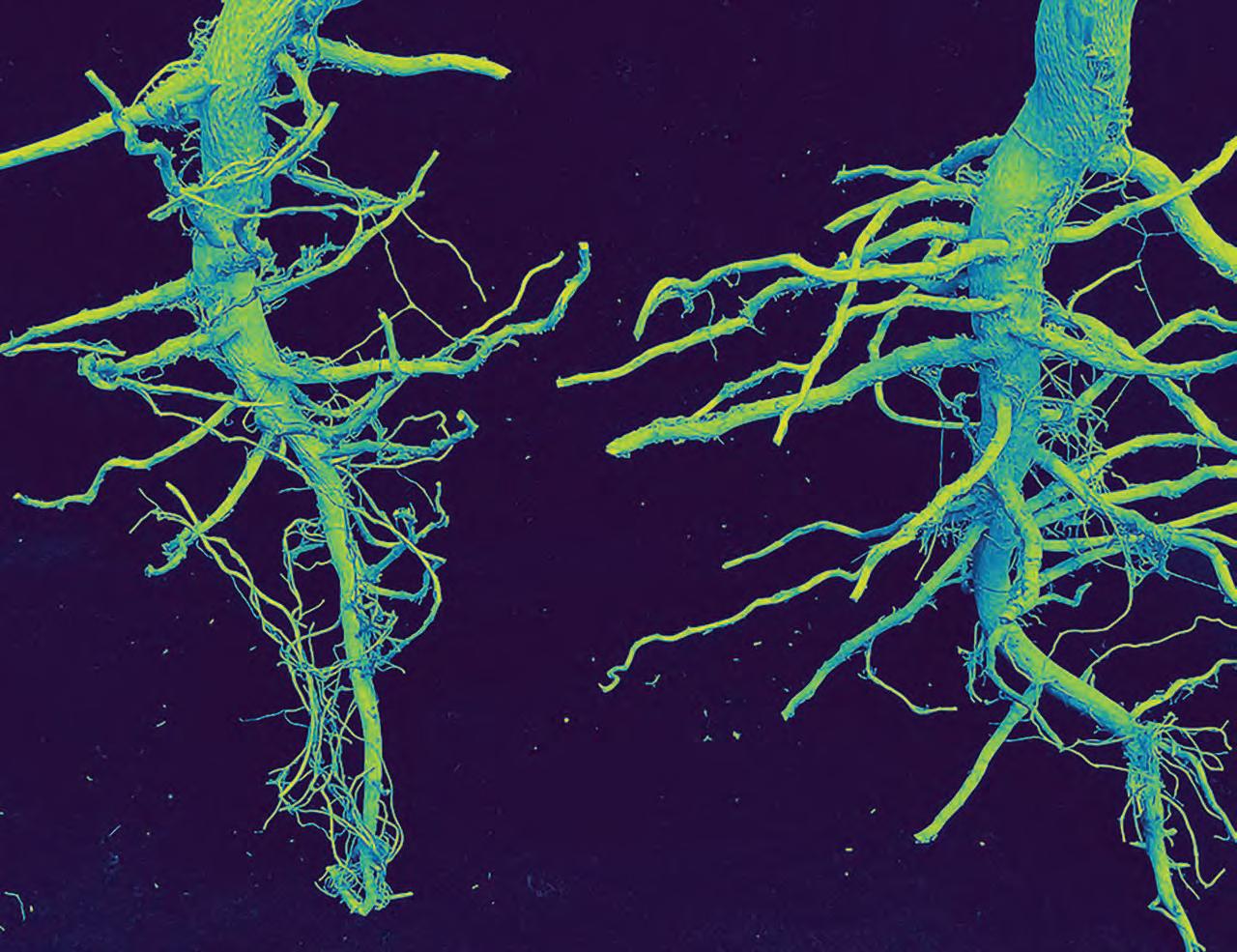
In the 1950s, while Jonas Salk was working in the US on the polio vaccine, across the border in Canada, plant scientists were working on a very different technology: making the seeds of the rape plant—a relative of cabbage and mustard—more edible. (The unfortunate name comes from rapa , the Latin word
for turnip.) They finally succeeded in the 1970s, bringing to market the morepalatable canola (the name is short for “Canadian oil, low acid”), a cultivar developed using conventional plantbreeding methods. Today, canola is the second-largest crop grown for its oil in the world, after soy.
Preliminary results showing the original plant (the control) on the left and the modified plant with larger roots on the right. Future work will confirm these results.
10 INSIDE SALK FALL 2023 WWW.SALK.EDU
For this reason, canola is one of the primary plants in the Institute’s Harnessing Plants Initiative, which aims to address climate change by storing excess carbon—from carbon dioxide (CO2) in the atmosphere—in deep, long-lasting plant roots. The Initiative focuses on similarly important global crops, including rice, sorghum, and soy.
“Salk Ideal Plants are the key to our Harnessing Plants Initiative’s ambitious goal of sequestering 10 gigatons of CO2 per year in plant roots,” says Professor Joanne Chory, director of the Plant Molecular and Cellular Biology Laboratory and founding director of the Initiative. Chory is also a Howard Hughes Medical Institute Investigator and Howard H. and Maryam R. Newman Chair in Plant Biology. “We’re pretty excited about this technology, which takes its cues from nature.”
A gigaton is a billion tons, and 10 gigatons is the amount of CO2 that needs to be drawn down annually to stay within 1.5°C (2.7°F) of warming by 2050, according to the National Academies of Sciences, Engineering, and Medicine.
Plant roots naturally produce and store durable, carbonrich compounds, such as a substance called suberin; the Harnessing Plants Initiative’s goal is to dial up natural production using genetic and epigenetic methods.
Professor Wolfgang Busch, the executive director of the Initiative, is an authority on the genetics of root growth.
“Roots have the capacity to store large amounts of suberin relative to the plant as a whole, and if we put suberin and other root materials deeper in the soil, they will stay there for a long time,” says Busch, holder of the Hess Chair in Plant Science. “That’s why we are focused on finding ways to help plants make larger, deeper roots that store more suberin—these three traits are ideal for plant-based carbon sequestration.”
The objective is for the seeds of these engineered plants— trademarked as Salk Ideal Plants—to be planted at scale all over the world, serving the dual purpose of locking away carbon as the plants grow, while also producing food for Earth’s growing population.
“The natural loss of carbon from soil reduces soil quality,” says Busch. “Climate change is actually speeding up this process, which is why strategies to add carbon back into soil and keep it there longer is essential to maintain—and even increase— crop yields.”
The Harnessing Plants Initiative’s leadership team also includes Professor Joseph Ecker, Associate Professor Julie Law, Research Professor Todd Michael, and Professor Joseph Noel. The team expects Salk Ideal Plants to enrich soils with their higher carbon content and be more resilient to climate extremes, such as drought and flooding, due to the insulating quality of organic carbon.
“We are now in the double digits in terms of identifying candidate genes for each ideal trait,” says Chory. “Some of these genes are already being translated into crop plants— like canola—to be tested in field trials, and the work is only accelerating thanks to our many committed supporters.”
Multimillion-dollar donations to the Harnessing Plants Initiative have come from the Bezos Earth Fund, the Hess and Sempra corporations, and the Audacious Project (housed at TED). But individual donors have also contributed.
“I hear from people all the time who tell me how important this work is to them, for their children’s and grandchildren’s sake,” Chory adds. “Knowing we’re working to solve an existential problem for humanity is what keeps us motivated, because we’re trying to optimize for several different traits at the same time, and that’s not easy.”
“I hear from people all the time who tell me how important this work is to them, for their children’s and grandchildren’s sake,” Chory adds. “Knowing we’re working to solve an existential problem for humanity is what keeps us motivated, because we’re trying to optimize for several different traits at the same time, and that’s not easy.”
11 INSIDE SALK FALL 2023 WWW.SALK.EDU
PROFESSOR JOANNE CHORY
Wearable
mIcroscopes: trackIng cellular actIvIty
In real tIme durIng behavIor
Associate
Professor Axel
Nimmerjahn,
director
of Salk’s
Waitt Advanced Biophotonics Center, is well-versed in the challenges of simultaneously optimizing multiple parameters. His lab develops minuscule wearable microscopes to visualize and image the cells of the central nervous system—the brain and spinal cord—to better understand their roles in health and disease.
The spinal cord is the epicenter of critical reflexes, such as pulling our hands away from a hot stove before our brains have even registered the danger. But it is especially challenging to study the spinal cord because it is so small and difficult to access, especially in mice.
Pain and itch are sensed in the spinal cord first. When pathological, such sensations are difficult to treat, partly because the cellular mechanisms are not always clear. Since arriving at Salk in 2011, Nimmerjahn has been working to change that by making it literally easier to examine the cells involved in freely moving mice.
In 2016, with the wearable microscope his lab had developed to that point, Nimmerjahn made the surprising discovery that neurons are not the only spinal cells involved in sensing pain; star-shaped glial cells called astrocytes—long thought to be merely passive support cells for neurons—also respond to pain signals. That finding was so intriguing, the team wanted to study astrocyte activity more closely, but it was impossible with the existing technology, which was geared more toward neurons. Improving a microscope to make such studies possible was no small feat.
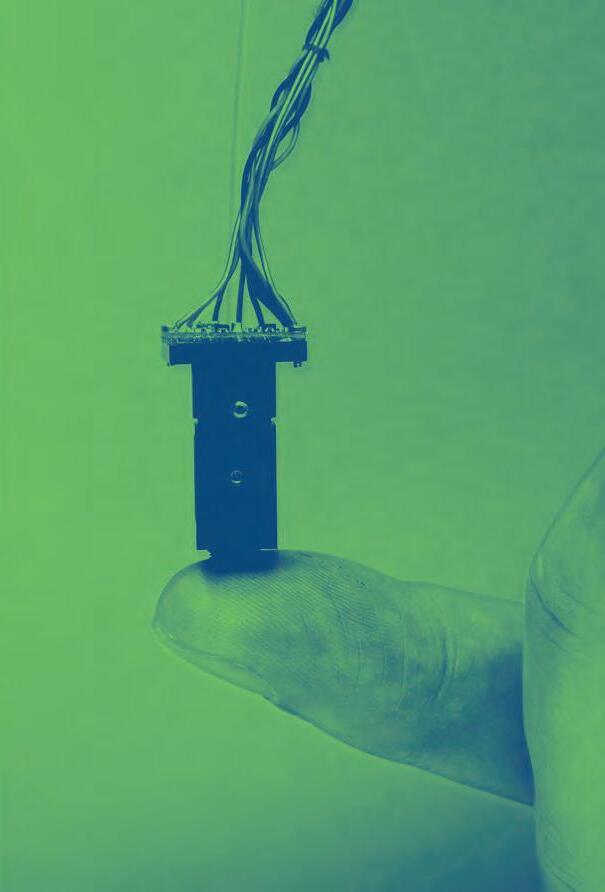
“The challenge on the engineering side of things is to have a microscope with cellular resolution and a large field of view,” says Nimmerjahn. “And an additional challenge is that it also needs to be small and light enough to be carried by mice—all the optical, electronic, and mechanical components have to fit into a device the size of a pinky finger that weighs no more than a few grams.”
What makes it so tricky is that different parameters can negatively influence each other—so, for example, improving a microscope to resolve small cellular structures compromises how large an area you can view. Or optimizing for both area and cellular resolution increases microscope dimensions, which becomes incompatible with experiments in freely moving animals. Or, if you manage to optimize for size and weight to enable free motion in addition to the other parameters, you may not be able to visualize cells’ activity with sufficient contrast or in multiple colors. The number of parameters that need to be optimized simultaneously to effectively image cells across large tissue areas within moving animals is daunting.
Nonetheless, in a pair of papers published this past spring, Nimmerjahn’s team reported that their latest wearable microscopes solved these complex technical problems with a highly engineered set of lenses, each just a few millimeters in diameter, whose complex combination of material properties and arrangement collectively optimized the various parameters.
“Basically, you have several tiny pieces of glass—the individual lenses,” Nimmerjahn explains. “You need to decide on the
12 INSIDE SALK FALL 2023 WWW.SALK.EDU
number of lenses, their thickness, diameter, curvatures, and distances between them. You need to think about what type of glass you’re using—we used different types of glass for the various lenses. Each of these glass types has a different refractive index. For example, eight different lenses, as we used in one of the microscopes, mean eight different thicknesses, diameters, glass types, and spacings, and 16 surface curvatures. So when you do modeling, you’re modeling in a very high-dimensional space.”
Modeling refers to how software creates a model of the lens system, where the researchers can vary parameters like curvature and lens separation in an effort to optimize the performance of the optical system as a whole. Different overall design variations are tried and optimized until the design achieves the requisite performance. Then the lens system and its housing can be manufactured, which is also complex since everything is so tiny. At that point, it is finally possible to maneuver the microscope over the mouse’s spinal cord and begin imaging to then optimize the tissue preparation and behavioral test parameters.
The wearable microscopes allowed Nimmerjahn’s team to visualize cellular activity in real time in the spinal cords of mice as they received different sensory stimuli. For example, the team found that astrocytes sent coordinated signals across several spinal segments when the researchers briefly but intensely squeezed the animals’ tails. Prior to the development of the new microscopes, it would have been impossible to see, in detail, what happens in cells across such broad areas of the spinal cord, much less in non-neuronal cells. Meanwhile, the team found that astrocytes show increased activity in inflammatory and chronic pain conditions, and dampening the cells’ activity alleviates pain. This makes astrocytes promising new targets for therapeutic interventions.

Nimmerjahn’s team also studies other non-neuronal cells, such as microglia (central nervous system immune cells), which play crucial roles in various central nervous system injuries and diseases, such as spinal cord injury, viral and bacterial infections, stroke, autism spectrum disorder, Alzheimer’s disease, and multiple sclerosis (MS).
MS is an inflammatory autoimmune disease affecting the brain and spinal cord, for which imaging of both neurons and non-neuronal cells could be highly revealing. In MS, a person’s immune system attacks neurons’ insulation (myelin), making it difficult or even impossible for nerve impulses to travel effectively. This can lead to myriad sensory, motor, and cognitive issues—numbness, difficulty walking, and forgetfulness, to name a few.
Nimmerjahn is one of four Salk faculty members who received $1.5 million in January from the Sol Goldman Charitable Trust to research treatments for MS. He will investigate whether it is possible to control the devastating inflammatory responses in MS through non-neuronal interventions.
“Only when you see the cellular dynamics in action can you begin to understand what’s happening, why current treatments fail, and what new or combination treatments could halt or reverse the disease,” says Nimmerjahn.
Salk researchers developed two wearable microscopes to image cellular activity in previously inaccessible regions of the spinal cords of moving mice in real time.
“The challenge on the engineering side of things is to have a microscope with cellular resolution and a large field of view. An additional challenge is that it also needs to be small and light enough to be carried by mice—all the optical, electronic, and mechanical components have to fit into a device the size of a pinky finger that weighs no more than a few grams.”
13 INSIDE SALK FALL 2023 WWW.SALK.EDU
ASSOCIATE PROFESSOR AXEL NIMMERJAHN
mInI-organs In a dIsh: studyIng pancreatIc cancer more accurately

For most of her adult life, Assistant Professor Dannielle Engle has been dedicated to finding better diagnostic and treatment options for pancreatic cancer, the third-leading cause of cancer deaths in the US. (She shares her personal connections to the disease in Observations on p. 18.)
The pancreas is an abdominal organ approximately the size and shape of a small banana, which lies sandwiched between the stomach and large intestine. It makes digestive enzymes and hormones including insulin. Because symptoms of pancreatic cancer are not readily apparent, it often goes undiagnosed until it is too late. The five-year survival rate is 12.5 percent, and due to an increasing incidence, pancreatic cancer is projected to soon become the second-leading cause of cancer-related death.
Part of the reason pancreatic tumors go unseen is that they are protected within a dense meshwork of immune and
connective tissue cells. Only half of the cells in a pancreatic tumor are actually cancer cells. By the time a tumor is big enough to show up on a scan, it has likely already metastasized or spread. And pancreatic tumors are hard to treat because chemotherapies have difficulty penetrating the mesh of protective cells.
Pancreatic cancer is also difficult to study. Mouse models of the disease are expensive, time-consuming to use, and not a perfect proxy for humans. Meanwhile two-dimensional experiments using human cancer cells in laboratory dishes often lack the complexity of the surrounding environment. For these reasons, Engle is devoting significant resources to a new technology for studying pancreatic cancer: pancreatic organoids—essentially, miniature human pancreases.
“Our lab has a strong organoid program, which enables us to grow human pancreatic cells in three-dimensional conditions, not only from normal pancreases but from pancreatic cancer as well,” says Engle, who holds the Helen McLoraine Developmental Chair. Her lab maintains a biobank of human pancreatic cancer and pancreatitis organoids.
This enables the team to compare healthy pancreases to diseased ones; see pancreatic cells transition from healthy to inflamed—a precursor to cancer called pancreatitis; and
14 INSIDE SALK FALL 2023 WWW.SALK.EDU
Organoids in different wells of a dish held by a Salk researcher.
study the behavior of the whole collection of cells that drive pancreatic cancer development and progression.
Engle helped develop the first pancreatic organoids as a postdoctoral researcher in the lab of David Tuveson, one of the world’s foremost pancreatic cancer researchers. Since joining Salk in 2018, Engle has herself become an authority on pancreatic cancer and trains other researchers to culture “patient-derived organoids,” which are grown from cells obtained for research with the permission of their human donors.
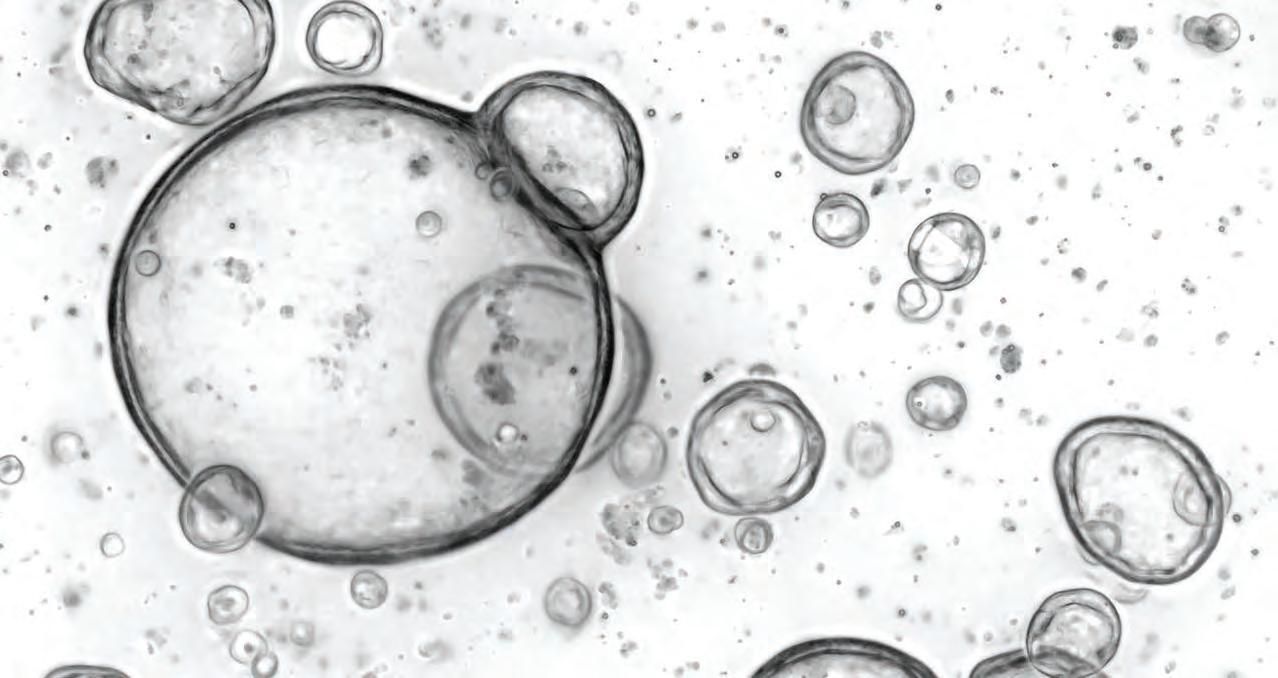
Children with hereditary pancreatitis are a patient group close to Engle’s heart. These kids have a 50 percent lifetime risk of developing pancreatic cancer, and often have severe and painful symptoms by age 12. Engle is hopeful that patientderived organoids will yield better therapies for such children in the next few years.
“Since we can see that these organoids maintain this inflammatory phenotype, we are asking if we can walk that back to more of a normal state using different therapeutic approaches,” says Engle. “Cancer prevention options are critical in this population. There’s one option and that’s having the entire pancreas removed. But that cuts at least 10 years off their life span, so it’s a really hard option to consider.”
Children who undergo the surgery need to have insulin-making cells transplanted back into their bodies to avoid being severely diabetic.
Engle is also working on technologies for early diagnosis of pancreatic cancer—a type of blood test, for example. In 2019, she made the consequential discovery that a carbohydrate molecule called CA19-9, which is present on many proteins, causes the progression from pancreatitis to pancreatic cancer.
She was initially hopeful that CA19-9 could be used for early detection, since CA19-9 levels are elevated in both pancreatitis and pancreatic cancer, but so far it has proven difficult. That’s because CA19-9 is not specific to those two conditions; even healthy people’s blood contains some CA19-9, and people with gallstones, liver cirrhosis, and other types of cancer can have high levels, too. The work is ongoing, buoyed by new technological advances driven by Salk and other scientists.
Organoids are complex 3D structures of cells.
“Our lab has a strong organoid program, which enables us to grow human pancreatic cells in three-dimensional conditions, not only from normal pancreases but from pancreatic cancer as well.”
15 INSIDE SALK FALL 2023 WWW.SALK.EDU
ASSISTANT PROFESSOR DANNIELLE ENGLE
SleAP: trackIng
motIon more easIly
Engle’s work on a diagnostic technology for pancreatic cancer is getting an assist from Salk Fellow Talmo Pereira. Pereira is a neuroscientist by training, but at Salk he runs a cross-disciplinary computational lab. Pereira collaborates with other Salk faculty members to analyze their data using artificialintelligence-based software he initially developed as a graduate student at Princeton University.
At Princeton, Pereira was trying to quantify the courtship dance of male fruit flies for his research. By studying animal motion, neuroscientists gain insights into such abstract mental processes as attraction, motivation, and aggression—as well as the circuitry needed for more concrete functions, like physical movement. The former can go awry in neuropsychiatric diseases such as depression and schizophrenia, while the latter can be dysfunctional in such conditions as Parkinson’s disease and obsessive-compulsive disorder.
But for Pereira, the fly quantification work was tedious and imprecise, and the options for automating it were not very good. He wondered whether the technology used by filmmakers to track motion and translate it into 3D animation— green screens and sensors—could be developed to more easily track the movements of flies. He realized that, instead of using physical sensors to map flies’ body positions, he could use computer vision (the ability for computers to understand visual images) combined with deep learning (the artificial intelligence [AI] approach of training a computer to work like the human brain).
Pereira developed the first version for tracking just one animal at a time and called it LEAP, which stands for “LEAP estimates animal poses.” (The name epitomizes a playful concept called a recursive acronym—an acronym that refers to itself.) Once Pereira arrived at Salk in November 2021, he revised LEAP to be able to track multiple animals and renamed it SLEAP, for social LEAP.
SLEAP works like this: The user identifies body parts in a few video frames or still images—for example, head (front), thorax (middle), and abdomen (rear), in the case of flies. Then the software “learns,” based on the annotated image, how to recognize flies in other images.
The software is freely available and open source, meaning anyone can inspect or alter the code as needed.
“People have used SLEAP to track every type of animal you can think of: worms, flies, mice, fish, giraffes, whales,” Pereira says. “It really spans the gamut, owing to its flexibility and also owing to the fact that we put a lot of work into making it a really nice, easy-to-use software that doesn’t require any technical expertise.”
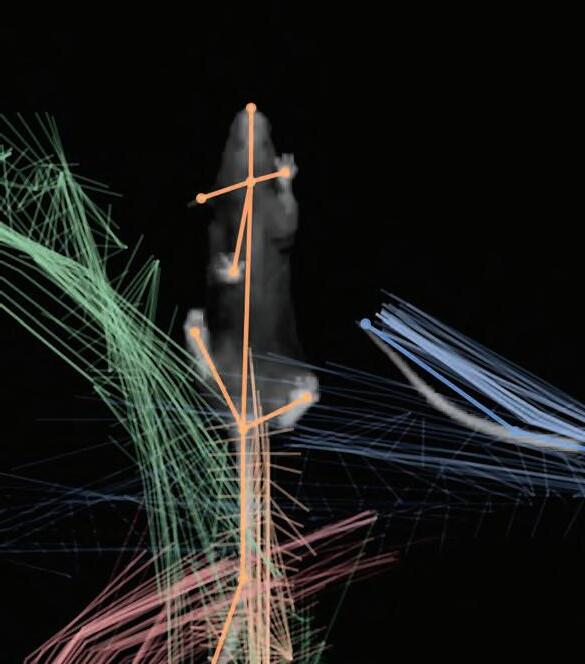
The power of the software comes from its ability to learn, which means that after initial training the user may not need to make

Since November 2022, SLEAP has been downloaded more than 75,000 times across 49 countries, resulting in more than 600 academic citations.
16 INSIDE SALK FALL 2023 WWW.SALK.EDU
Artificial intelligence technology records the movements of mice. The patterns of movement are combined with statistical methods to decode body language into signals of what is happening inside the brain and body.
many corrections to its identifications before the software becomes fairly accurate. In fact, the software proved so effective at tracking animal movement, Pereira soon realized that with very little data, researchers could track any set of points, whether animals, plants, cells, or even nonliving objects.
Pereira and Professor Thomas Albright, also a neuroscientist, used SLEAP to track how humans visiting the Los Angeles County Museum of Art (LACMA) interacted with exhibitions. The study aimed to help improve exhibition design and provide insights into how humans experience the world around them. Ten cameras covered every bit of the exhibit space and recorded visitors moving through it. SLEAP tracked everything about how the people moved, from how long they lingered facing a particular exhibition to whether they interacted with other people.
Pereira is also collaborating with Professor and Hess Chair in Plant Science Wolfgang Busch, using SLEAP to track the growth and motion of plant roots, as part of the Harnessing Plants Initiative.
The SLEAP software frees up researchers to focus on analyzing data rather than on annotating it for identification. It is rapidly gaining a reputation for usefulness, and since November 2022 it has been downloaded more than 75,000 times across 49 countries. It has yielded more than 600 academic citations.

“Our user base continues to increase at an alarming rate,” Pereira laughs.
As for the pancreatic cancer diagnostic technology, Pereira, Engle, and Professor Christian Metallo are using a 2023 Salk Collaboration Grant to see whether they can use AI to predict cancer from body language.
“We have these mouse models of pancreatic cancer and we know the disease affects their metabolism in different ways, which in turn affects their behavior, particularly their feeding behavior,” says Pereira. “And so the idea is to pull out all of these little nuances of the body language of the animals that eventually develop the disease.”
In other words, there could be statistical patterns related to having cancer that a computer might be more likely than a human to find. If successful in the mouse model, Pereira envisions AI someday being used to help diagnose cancer extremely early in humans, with doctors routinely taking short videos of patients going through a series of movements for the software to analyze.
Joan and IrwIn
Jacobs ScIence and Technology center: facIlItatIng the future of dIscovery
As part of the Campaign for Discovery , a seven-year, $750 million comprehensive fundraising campaign, Salk plans to build the new Joan and Irwin Jacobs Science and Technology Center on the east side of the Institute’s iconic campus. The 100,000-square-foot facility will provide much-needed research and support space to advance and expand the Institute’s scientific mission.
The Jacobs Center will be home to Salk’s Cancer Center, Center for Healthy Aging, Hess Center for Plant Science, and CrickJacobs Center for Theoretical and Computational Biology. Their colocation and expansion will create more opportunities for life scientists to leverage leading-edge technologies and work side by side with engineers to build and customize research tools and design novel experiments.
The Jacobs Center will be a home for the kinds of crossdisciplinary collaborations that happen only at Salk—a neuroscientist tracking plant growth or an expert in metabolism using AI to predict cancer, for example. The Center will build on the power of Jonas Salk’s vision of flexible and functional design and will empower the next generation of scientists— those already at Salk and those yet to come.
Science is a collaborative pursuit, and we invite you to join us in developing new technologies and accelerating life-changing discoveries at salk.edu/campaign

17 INSIDE SALK FALL 2023 WWW.SALK.EDU
Rendering of the Joan and Irwin Jacobs Science and Technology Center as seen looking east from the Salk Courtyard.
DANNIELLE ENGLE
Putting patients first
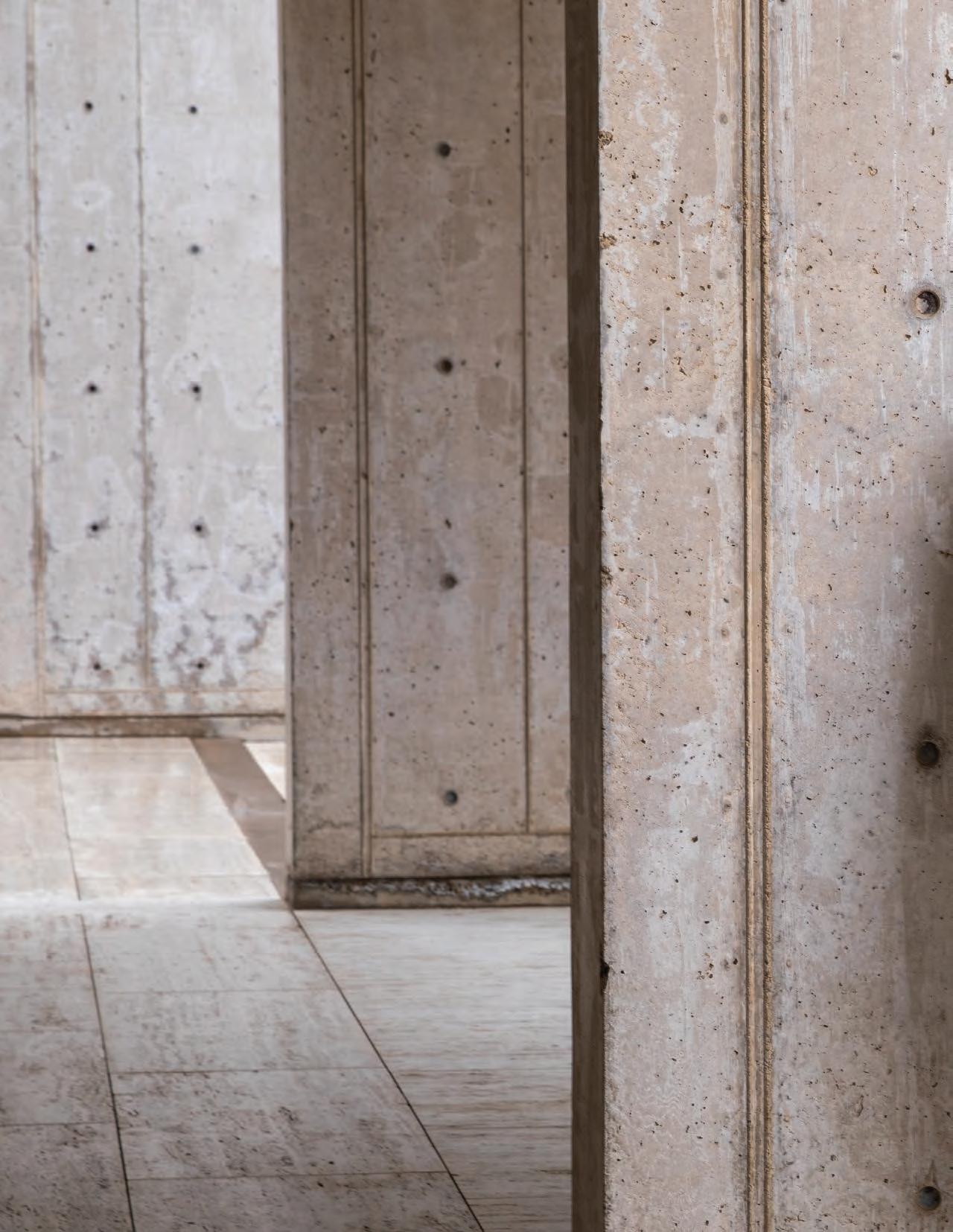
OBSERVATIONS
18 INSIDE SALK FALL 2023 WWW.SALK.EDU
DANNIELLE
Assistant Professor Dannielle
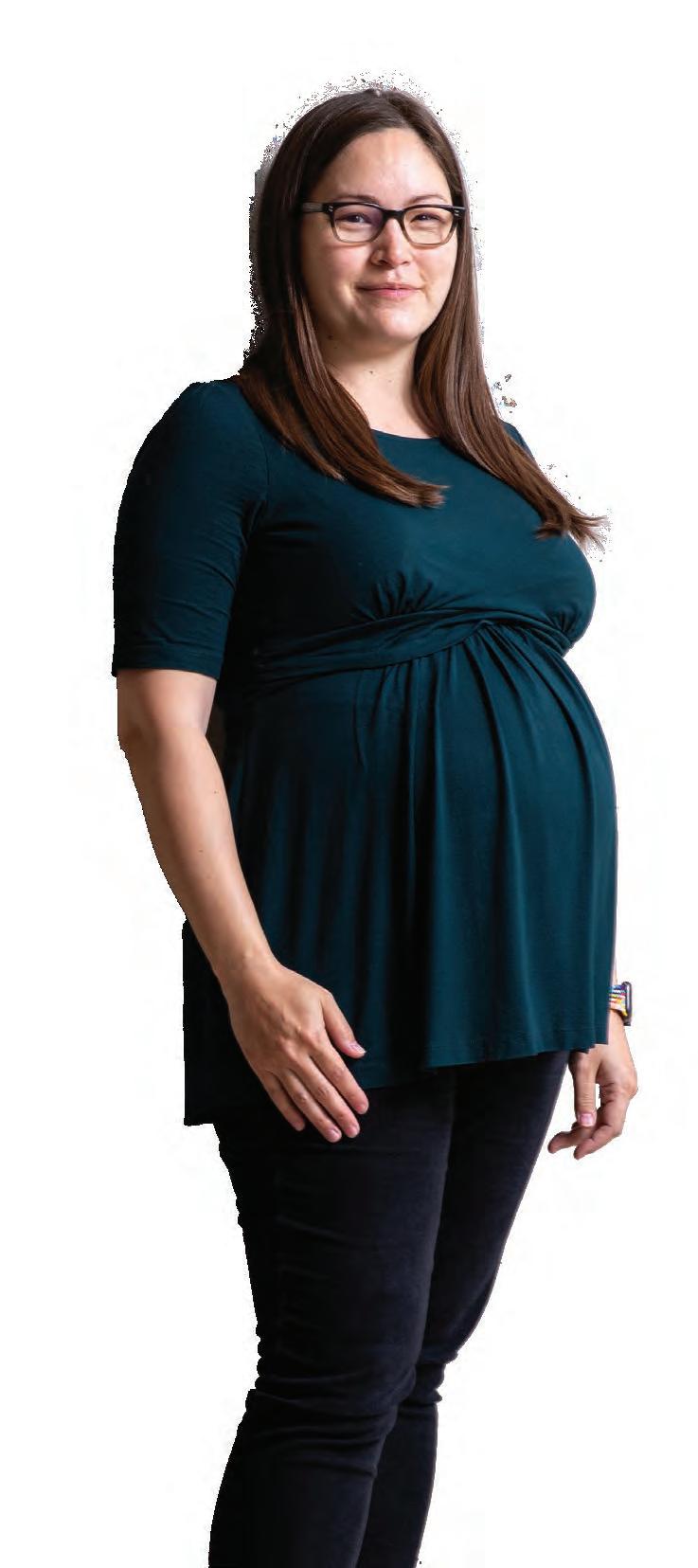
Engle has a deeply personal connection to pancreatic cancer that changed her career trajectory and made her want to focus on the disease’s early detection and treatment.

The pancreas is an abdominal gland that makes digestive enzymes and hormones, including insulin. Because the early symptoms (bloating, fatigue, nausea) are common to many conditions, pancreatic cancer—the third-leading cause of cancer deaths in the United States—is often not diagnosed until later stages, when treatment options, such as surgery, are limited or ineffective.
Engle’s work is already proving to be so groundbreaking that it is garnering such prestigious awards as the first Lustgarten Foundation-American Association for Cancer Research Career Development Award for Pancreatic Cancer Research, in Honor of Ruth Bader Ginsburg, the late Supreme Court Justice and women’s rights pioneer who lost her life to the disease.
Inside Salk sat down with Engle to find out more about her dedication to finding better treatment options for people with pancreatic cancer and its precursor, pancreatitis (inflammation of the pancreas).
19 INSIDE SALK FALL 2023 WWW.SALK.EDU
You have a personal connection to pancreatic cancer. Would you please share it with us?
DE: When I was a senior in college, my father was diagnosed with pancreatic cancer. At first it seemed he was very lucky because he developed an early warning sign called jaundice, a condition that causes your skin to turn yellow. He was diagnosed with stage 1 pancreatic cancer, so he was eligible for surgery. It’s a very complicated surgery, with a mortality rate of upward of 10 percent. So, I flew home to be with him and the rest of our family. The surgeons removed the tumor, but every single one of his lymph nodes was positive. What that means is, he actually had metastatic pancreatic cancer that had spread to his lymph nodes. What we thought was stage 1 was actually stage 4—the most advanced stage. Even in the luckiest scenario, we were still left with very few options. He died 14 months later. That was hard. I still get emotional every time I talk about it.
How did your father’s diagnosis change your career trajectory? Weren’t you studying music in college?
DE: Yes, I had always liked both and was pursuing a music major and a biology minor. But at some point, I was no longer satisfied. I had this intellectual drive and curiosity about science. And in conversations with my dad, he had said, “Certainly you bring joy to people’s lives by playing music. But, you know, clinicians are making patients feel better. And scientists are figuring out why they’re sick in the first place, and how to prevent it from happening. That’s a level of impact that few people have an opportunity to make.” Then my first experience in a lab helped me make the decision. I thought, “I could do this every day of my life and be completely fulfilled.” That’s when I realized that I will always love music, but science is really my calling.
What did you do next?
DE: I completed my PhD in biological sciences in Professor Geoffrey Wahl’s lab and started my postdoctoral research in David Tuveson’s lab, which is the eminent lab focusing on pancreatic cancer. A few years into my fellowship, my uncle— my mother’s brother—was diagnosed with pancreatic cancer. He died six months later. That was a punch in the gut because I’m studying pancreatic cancer, but I’m not finding answers fast enough; I still don’t know enough.
I realized what we need is more labs completely dedicated to studying pancreatic cancer because this is the reality for most people diagnosed with pancreatic cancer. You hear about those tremendously lucky cases like Ruth Bader Ginsburg, who survived more than 10 years. But how did we find her pancreatic tumor? It’s because she was being surveilled for colorectal cancer relapse; she was receiving regular scans, and they found this tiny tumor in her pancreas before it spread—and it still got her 10 years later!
How do you find motivation in the face of such overwhelming odds?
DE: I used to attend research walks and awareness campaigns and would never meet a pancreatic cancer survivor. But we had a research walk last spring, and I met three survivors. I didn’t have to search for them; I didn’t have to scour the social media networks for them; they were just there. And it’s so encouraging. There is scientific progress, it’s just still slow. But the work is leading to new drugs.
In 2019, you made a pretty significant discovery—that a carbohydrate molecule called CA19-9, which is present on many proteins, causes the progression from pancreatitis to pancreatic cancer. Can you talk about that?
DE: CA19-9 is expressed in pancreatic tumors, and we previously thought it didn’t really do anything, that it was just an inert bystander. But CA19-9 is actually secreted and travels systemically throughout the body. I found that it’s a signaling molecule that affects both the immediate environment of the pancreas as well as the surrounding microenvironment through its interactions with fibroblasts—connective tissue cells—and macrophages, a type of immune cell.
Your lab is doing both basic research and testing new drugs, correct?
DE: Most research starts with understanding normal biology and how it’s perturbed in disease, whether that’s inflammation—pancreatitis—or pancreatic cancer. And then that mechanistic understanding gives us targets, and we can chase after those targets to see if they would be good biomarkers for early detection or drug development. Our lab starts with the normal biology and goes all the way to clinical applications.
“Certainly you bring joy to people’s lives by playing music. But, you know, clinicians are making patients feel better. And scientists are figuring out why they’re sick in the first place, and how to prevent it from happening. That’s a level of impact that few people have an opportunity to make.”
ASSISTANT PROFESSOR DANNIELLE ENGLE RECALLING HER FATHER’S ADVICE
20 INSIDE SALK FALL 2023 WWW.SALK.EDU
Can you explain what a patient organoid model is?
DE: A patient organoid model is a living avatar that mimics the characteristics of the tumor or diseased tissue from which it is derived. We use these models in several different ways. This includes understanding the underlying reasons for why tumors are resistant to treatment and how they interact with local microenvironments. And, in addition to doing the traditional research work, we also do what’s called a “tumor board,” where we very rapidly try to find a drug treatment that works for a specific patient. Right now, we do this empirically, testing drugs one by one. But in the future, we hope that we can make this process faster by finding predictive biomarkers. For example, if a patient’s organoid model expresses markers X, Y, and Z, they’re more likely to respond to treatments A and B. Whereas if they don’t express those three markers, and instead express completely different markers, they’re more likely to respond to treatment C or to something else.
In addition to studying cancer, our lab has been creating a human biobank of pancreatitis organoids—essentially, pancreases in a dish—to better understand the progression from inflammation to cancer. Very little is known about human pancreatitis in terms of cell signaling and its interactions with the microenvironment because it’s hard to study.
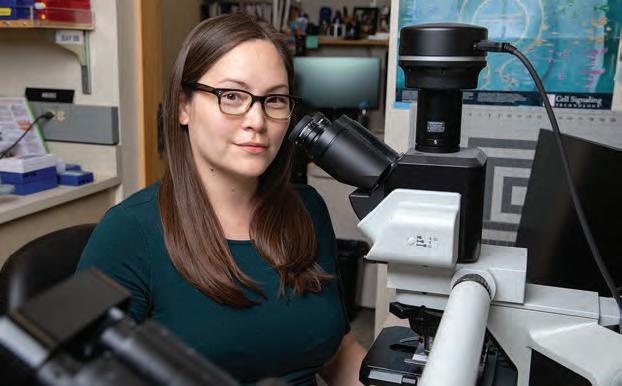
Now that we have these renewable organoid models, we can do mechanistic dissections that we’ve done for normal and tumor biology in this intermediate inflammatory stage.
We’re leveraging what we’re good at—drug testing, pharmacotyping (defining patient variability in drug testing), and precision medicine approaches for cancer—and we’re bringing that to bear on pancreatitis because it’s a debilitating disease. It’s interesting not just because it’s a risk factor for pancreatic cancer but also because it affects millions of people and is incredibly painful. Hopefully in the next few years we’ll be able to add some additional treatment options. (For more about Engle’s organoids, see Frontiers, p. 14.)
At Salk, you’re now serving as a pancreatic organoid resource for labs around the world. How does that feel?
DE: The beautiful thing about the Salk Institute is that we’re not here to be famous or to be the sole expert in some area and defend our turf. It's about working together to ask bigger, more transformative questions.
We are incredibly collaborative in the pancreatic cancer field. I was trained in an environment where you are generous— because guess what? We’re never going to run out of questions. It’s not like there are only 10 questions in the world that are important, and we have to compete over them.
And being personally affected—having lost my father and my uncle—for me it’s not a matter of who’s right. It’s a matter of getting better care for our patients. And so that requires that you take a step back and that you don’t let your ego come into
play, because we’re better scientists when we have diverse perspectives, and when we collaborate—the ideas are just exponentially better.
You’ve garnered a good deal of financial support for your lab over the past few years. What has that allowed you to do?
DE: The first thing the funding enabled me to do is build a spectacular team. I currently have three postdoctoral researchers, three graduate students, and four research assistants. We work on every single stage of pancreatic disease, from the first episodes of inflammation that open the gateway to formation of tumors to metastasis, which is what most patients actually die from.
The lab has really grown over the years, with a sense of camaraderie as well as independence. It’s been rewarding to see the team take existing projects and make them their own, but also establish projects based off of their own ideas. I think, as a new principal investigator, that was one of my first worries—I think they get along; are they going to work well together? But, you know, when you have a diverse group of people who all have this common goal and common work ethic, it’s really, really cool to see them blossom as a team.
You’re committed to ensuring diversity in your lab and more generally. Can you talk about that?
DE: Diversity is incredibly important to me. I started my lab with a mission to help patients with pancreatic cancer, but I also wanted to help scientists in my lab be both better scientists and better people. That requires being in a diverse environment. When we have different ways of thinking, that’s when the most transformative ideas come about. Granted, the whole world has a lot of work to do, but here at Salk, it’s our mission to be excellent in everything, and diversity is included in that mission. Our founder, Jonas Salk, recognized that when he said, “It’s our responsibility to be good ancestors.” I think that is what he meant.
21 INSIDE SALK FALL 2023 WWW.SALK.EDU
Engle in her lab at the Salk Institute.
GRATITUDE

THANK YOU
to our generous supporters

Salk Institute receives $50 million from Hess Corporation to mitigate climate change through plant science
FALL
In April, Hess Corporation announced a $50 million donation to the Salk Institute’s Campaign for Discovery: The Power of Science. This gift will specifically advance Salk’s Harnessing Plants Initiative—an effort to mitigate climate change by optimizing plants and supporting wetlands to increase capture of excess atmospheric carbon— and provide vital infrastructure for this work by establishing the new Hess Center for Plant Science.
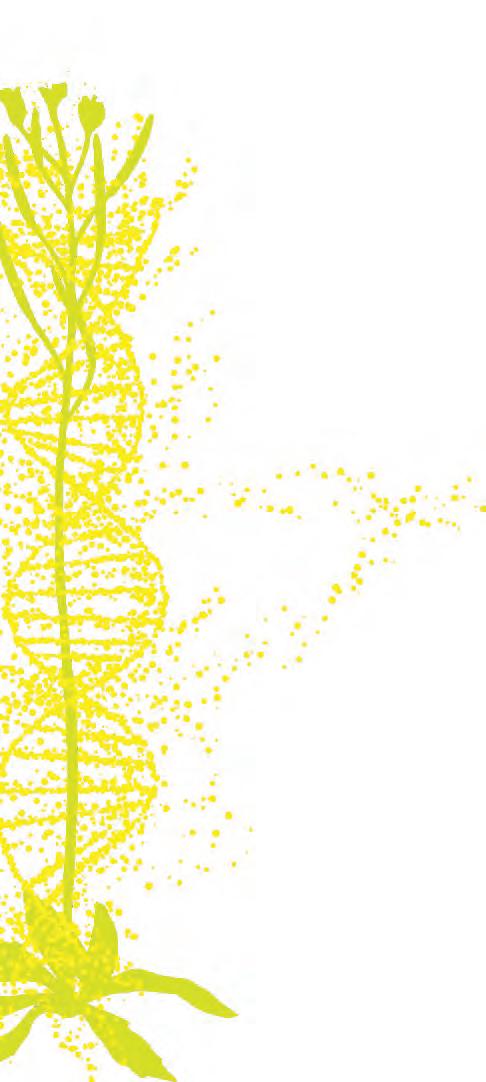
22 INSIDE SALK
THANK YOU 2023 WWW.SALK.EDU
The Hess Corporation gift will be dispersed over five years to support faculty recruitment and laboratory and research operations for the Harnessing Plants Initiative, as well as to create and endow the Hess Center for Plant Science, where Harnessing Plants Initiative scientists will work within the future Joan and Irwin Jacobs Science and Technology Center building.
“Salk experts are making impactful discoveries on a regular basis, combining genetics, epigenetics, computational biology, and other disciplines to understand how a plant’s genes determine the way a plant grows in an everchanging environment. When these scientists find they need technology that doesn’t yet exist, they often build it themselves,” says Salk President Gerald Joyce. “This gift will certainly accelerate the bold work being done by our talented group of plant scientists. We deeply appreciate the Hess Corporation for their continued generosity and partnership.”
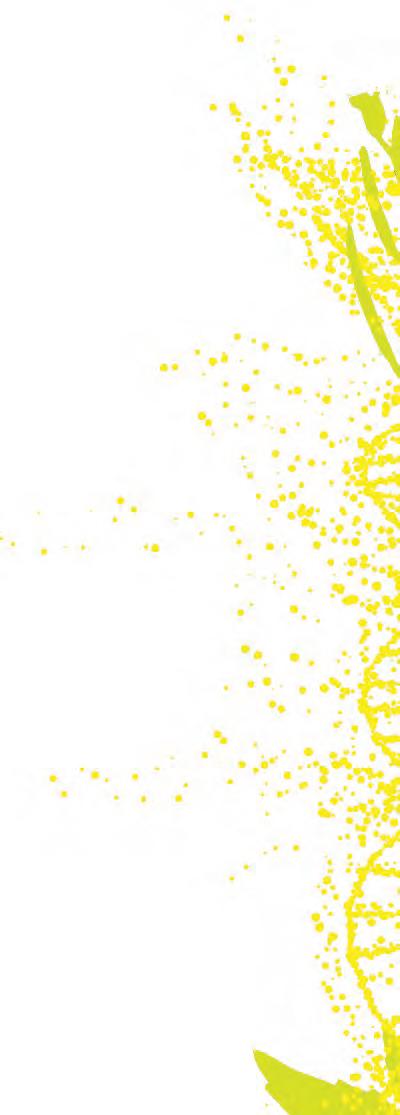
HARNESSING PLANTS INITIATIVE
Salk’s Harnessing Plants Initiative is led by Professor Joanne Chory, founding director, Howard H. and Maryam R. Newman Chair in Plant Biology, and Howard Hughes Medical Institute investigator, as well as Professor Wolfgang Busch, executive director and Hess Chair in Plant Science. Other faculty members include Joseph Ecker, Julie Law, Todd Michael, and Joseph Noel. The initiative comprises two projects aimed at mitigating climate change:
(1) CO 2 Removal on a Planetary Scale, in which scientists are developing Salk Ideal Plants® to capture potentially billions of tons of atmospheric carbon and store it in broader and deeper roots rich in molecules such as suberin, and (2) Coastal Plant Restoration, in which scientists are identifying and restoring wetland plants that retain carbon, purify water, preserve land, and thrive in challenging environments around the world. (Learn more on p. 10.)

In 2020, the Salk Institute received a $12.5 million gift from Hess Corporation to accelerate the development of plant-based carbon capture and storage. Since then, the Harnessing Plants Initiative team has made numerous advances in enhancing desired plant traits, including deeper rooting and the ability to sequester carbon, and is rapidly scaling its discoveries from laboratory to greenhouse to field trials. In 2021, Hess donated $3 million to establish the endowed Hess Chair in Plant Science at Salk.
HESS CENTER FOR PLANT SCIENCE IN THE JOAN AND IRWIN JACOBS SCIENCE AND TECHNOLOGY CENTER
As part of the Campaign for Discovery , Salk will build the 100,000-square-foot Jacobs Center on the east side of the Institute’s campus. The facility will provide much-needed research and support space to advance and expand the Institute’s scientific mission, in keeping with founder Jonas Salk’s vision of flexible and functional design.
The Jacobs Center will be home to four Centers of Excellence, including the Hess Center for Plant Science. The new facility will provide the Harnessing Plants Initiative team with more opportunities for interdisciplinary collaboration and the ability to leverage leading-edge technologies in computational biology.
“The Harnessing Plants Initiative is a potential game changer in tackling the global challenge of climate change,” says Hess Corporation Chief Executive Officer John Hess. “We are honored to support this innovative research led by Harnessing Plants Initiative leaders Joanne Chory and Wolfgang Busch. We believe this groundbreaking work will implement scientific breakthroughs on a global scale and can make a major contribution toward achieving the world’s ambition to reach net-zero emissions.”
We believe this groundbreaking work will implement scientific breakthroughs on a global scale and can make a major contribution toward achieving the world’s ambition to reach net-zero emissions.”
23 INSIDE SALK FALL 2023 WWW.SALK.EDU
JOHN HESS Hess Corporation Chief Executive Officer
INSIGHTS
Life is energy
The ancient Chinese concept of qi (pronounced chee) describes the vital life force, how energy flows throughout the body and the universe.
Weiwei Fan, a staff scientist in Professor Ronald Evans’ lab, sees qi as a way of explaining the complex interactions in our universe that lead to energy generation in our cells. For example, the sun shines on planet Earth, providing light energy to plants. Plants have structures called chloroplasts that use the energy from the sun’s rays to make carbohydrates (simple sugars) from carbon dioxide in a process called photosynthesis. Animals then eat plants and their mitochondria (the cell’s powerhouses), converting the chemical energy from food into usable energy for the animal. This flow of energy is the basis of life.
“It’s not a coincidence that I study mitochondria,” says Fan. “I feel drawn to understanding how these energy generators within our cells function and the natural variations that exist between individuals.”
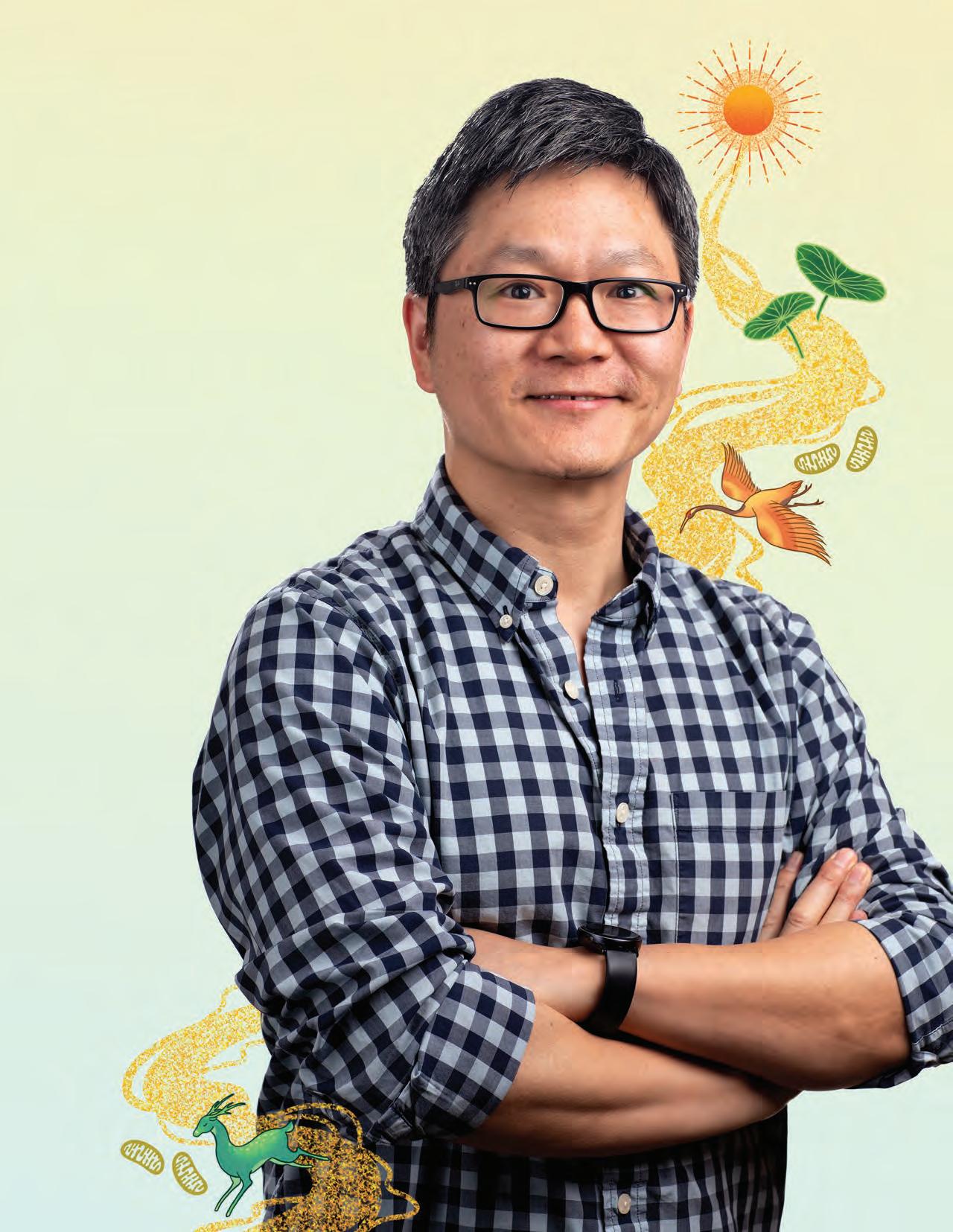
Weiwei Fan
24 INSIDE SALK
2023
FALL
EARLY LIFE
Fan grew up in the small Chinese city of Tongxiang, roughly two hours east of Shanghai. His father was a farmer-turnedbusinessman and his mother taught math at the local elementary school. Although he loved math, Fan became captivated by biology in high school when his teacher inspired him to think about biological problems and how to solve them, instead of just memorizing facts.
Around this time, Dolly the sheep had just been cloned—she was the first mammal to be cloned from an adult cell—and this advancement made a big impact on Fan’s trajectory. “I remember reading a report about Dolly the sheep that said, ‘The next century will be the century of biology.’ I knew then that I had to be part of that revolution,” says Fan.
PATH TO SALK
Fan attended Fudan University in Shanghai where he majored in biology and life sciences. There, he also met his wife, who is a scientist too. Together, they applied to doctoral programs around the world and were both accepted to UC Irvine.
Fan joined the lab of Douglas Wallace, who is one of the founders of the field of human mitochondrial genetics. Wallace also founded the Center for Molecular and Mitochondrial Medicine and Genetics at UC Irvine. There, Fan dove into exploring the differences in mitochondrial DNA to understand how variations impact the onset of disease.
“Everyone’s mitochondria are slightly different. Some people have mitochondria that produce a lot of energy, while others’ mitochondria generate heat,” says Fan. “These differences in function play an important role in evolution and adaptation and are linked to the onset of diseases, such as Alzheimer’s disease.”
Fan was one of the first people to develop animal models with mitochondrial DNA mutations to better understand these differences.
RESEARCH AT SALK
After completing his PhD, Fan joined Evans’ lab to examine how exercise impacts mitochondrial energy metabolism in muscle tissue. The team’s goal was to develop an “exercise mimetic,” a pill that could be taken to mimic the effects of exercise for those who are unable to exercise, such as those who have Alzheimer’s disease or movement limitations.
In 2017, Fan and the Evans team published a seminal paper in Cell Metabolism about the pill they developed that boosted the athletic endurance of sedentary mice by 70 percent.
“We essentially showed that it’s possible to improve endurance to the equivalent level as someone in training, without all of the physical effort,” says Fan.
The compound has since been licensed to a biotechnology company that plans to develop a version safe for human use and test whether it can treat certain diseases.
DAY-TO-DAY
Fan has now been at Salk for 13 years. As a staff scientist, he directs research projects under the guidance of Evans and applies for independent grants. Fan’s goal is to secure enough funding so he can start his own lab to focus on mitochondrial regulation and variation. For example, Fan wants to develop new mouse models that can better mimic human mitochondrial diseases, such as Leber hereditary optic neuropathy, which causes vision loss.
He is also interested in examining mitochondrial variations in people who live in different regions around the world. Research suggests that people who live in colder climates have mitochondria that generate less energy and more heat, whereas people in tropical regions have mitochondria that create more energy and less heat.
People who generate more heat may naturally burn more calories and have a lower risk of obesity. Additionally, generating large amounts of energy leads to the creation of reactive oxygen species, which damage cells, speed up aging, and are associated with Alzheimer’s disease.
Some mitochondrial variations may also lead to resistance against certain diseases or increase susceptibility to other diseases. Fan plans to make mouse models to test whether this theory is correct.
LEISURE TIME
Fan and his wife have two daughters, ages 13 and 17. The family enjoys biking along the State Route 56 bike path, hiking the Los Peñasquitos Canyon Trail to the waterfall, and trying different hot pot restaurants around San Diego. Although Fan is an excellent cook, he still enjoys visiting authentic Chinese restaurants like Spice City and Haidilao.
FUN FACTS
Fan jokes that he looks much older than his wife because he has gray hair. “My wife often gets mistaken for one of my daughters—which she loves—when we go out,” he laughs.
LONG VIEW / FUTURE PROJECTS
“There is great potential for the field of mitochondrial biology. With recent advancements in genetic engineering, we can now edit mitochondrial DNA to answer new questions about evolution, adaptation, and the stress response,” says Fan. “I’m excited to apply this technology to my own research to examine mitochondrial diseases.”

There is great potential for the field of mitochondrial biology. With recent advancements in genetic engineering, we can now edit mitochondrial DNA to answer new questions about evolution, adaptation, and the stress response.”
25 INSIDE SALK FALL 2023 WWW.SALK.EDU
WEIWEI FAN
FRANCOISE GILOT
Art icon, author, and wife of Institute founder Jonas Salk.
Francoise Gilot, artist, best-selling author, and wife of the late Salk Institute founder and vaccine pioneer Jonas Salk, died on June 6 at a hospital in Manhattan at the age of 101.


IN MEMORIAM
26 INSIDE SALK FALL 2023 WWW.SALK.EDU

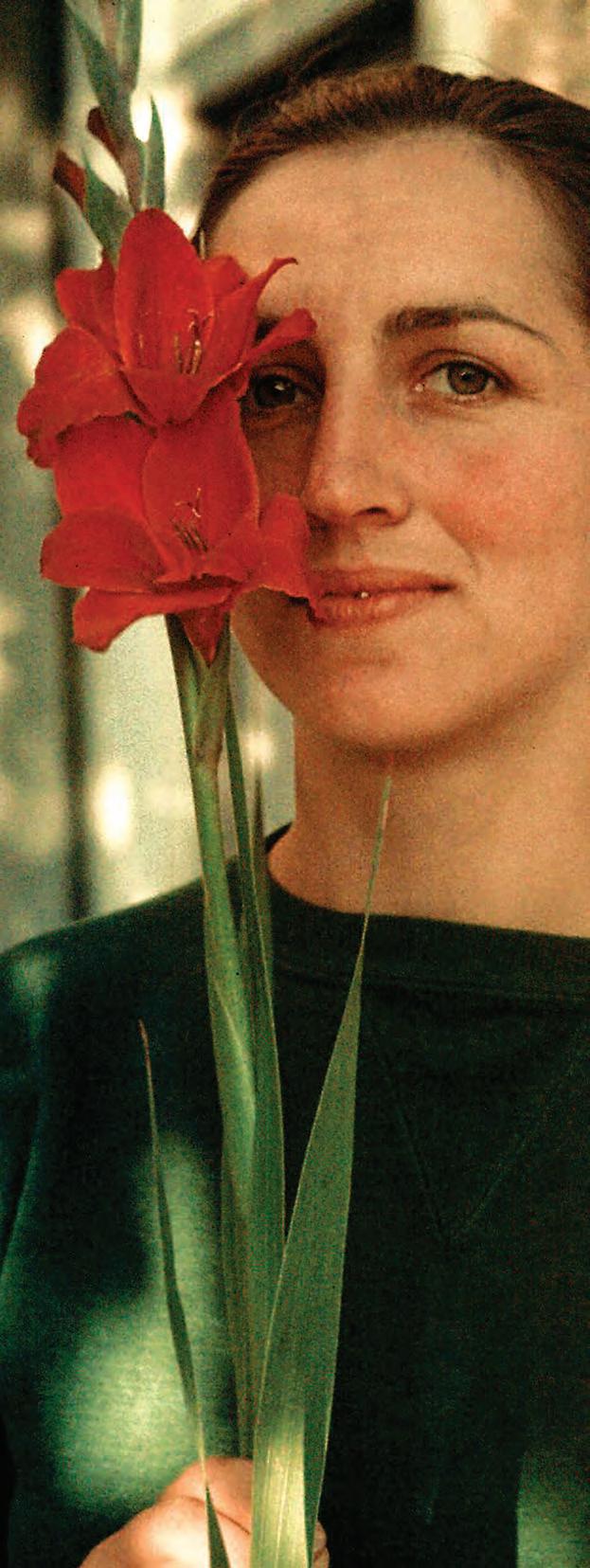
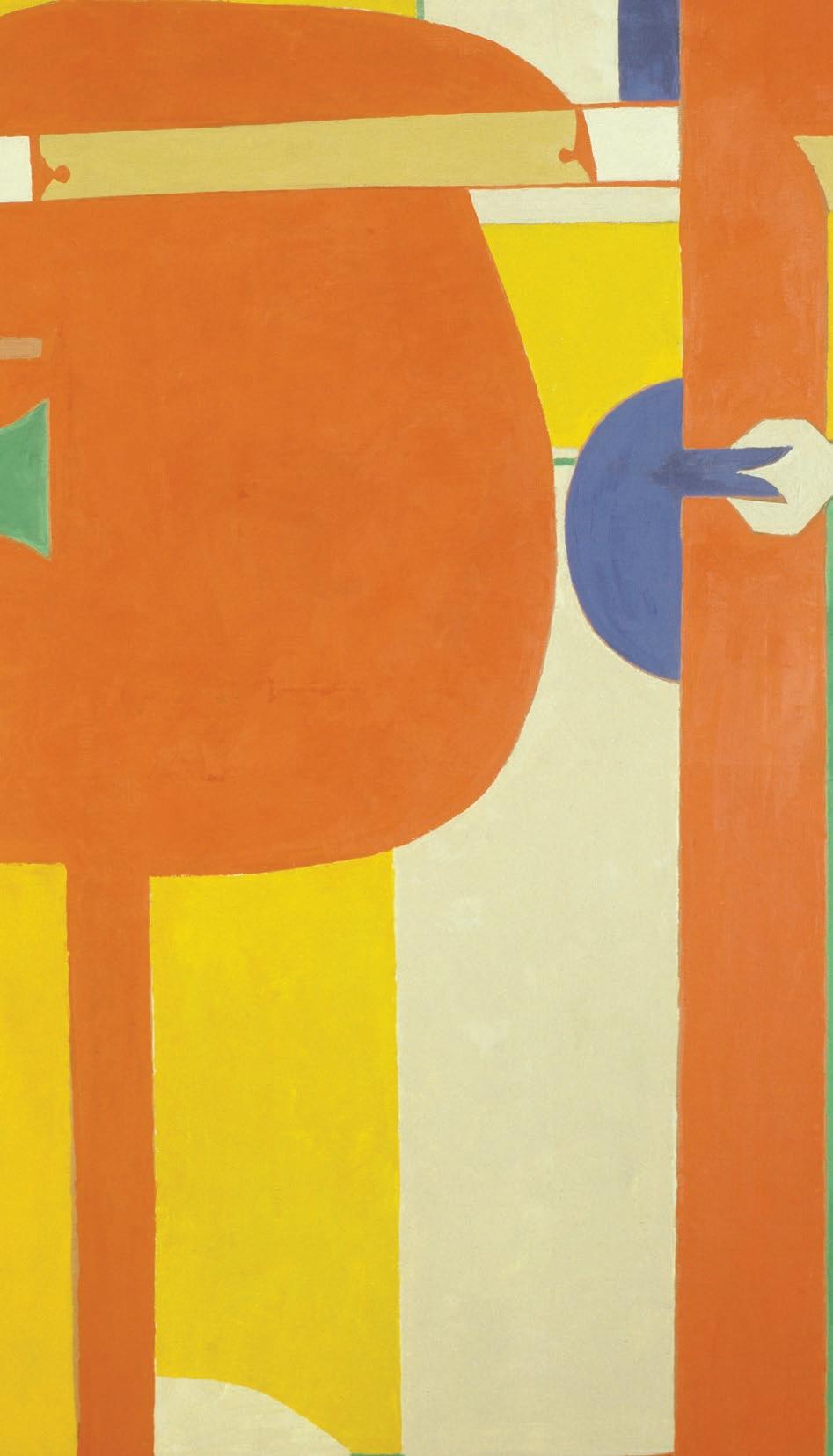
27 INSIDE SALK FALL 2023 WWW.SALK.EDU
“Françoise Gilot has been truly inspirational to all of us at Salk, to Jonas during his life, and to our entire community through her involvement with Symphony at Salk and many other Salk undertakings,” says President Gerald Joyce. “Her artistic genius can be seen on display around campus through the many pieces of art she donated to us. While we grieve her death, we celebrate Françoise’s spirit as we reflect on her art and her commitment to the Salk Institute.”
Gilot was well known for her fascination with architecture and for a lifelong interest in science. Her love of architecture led Gilot to visit the Institute’s campus in 1969, where Jonas Salk personally led her on a tour. They were married in 1970 and remained wed until Salk’s death in 1995.

Their union perfectly captured the core institutional belief that there is an inextricable link between art and science. The Salk Institute has been the proud and grateful steward of this value in many ways, most popularly and notably in the contributions Gilot’s art has made to the depth and creative energy around the Institute. Further, a $10 million gift from Ferring Pharmaceuticals was used to establish the Françoise Gilot-Salk Chair at the Institute.
The chair is still held by its inaugural appointee, Professor Greg Lemke, who now also serves as the Institute’s chief science officer.
“It has been my tremendous honor to hold Gilot’s namesake chair for all these years,” says Lemke. “In many ways, she has been the heart of the Salk Institute. We all will miss her spirit and contributions.”
By the late 1960s, when she met Salk, Gilot was already an internationally recognized artist and best-selling author. Although she graduated from the Sorbonne in 1938 with a bachelor's degree in philosophy, Gilot abandoned her graduate studies in international law in the early 1940s to devote herself to painting. In 1943, at just 21, she had her first exhibition. During the 1940s and 1950s, she developed strong friendships with the legendary artists of the time, including Matisse, Braque, and Cocteau. In the summer of 1958, Gilot embarked on a new series of canvases, a decision that is considered central to her development as an artist. Deftly composing space
 Gilot’s artwork is digitally projected on the Courtyard towers during an annual Symphony at Salk event.
Gilot’s artwork is digitally projected on the Courtyard towers during an annual Symphony at Salk event.
“In many ways, she has been the heart of the Salk Institute. We all will miss her spirit and contributions.”
28 INSIDE SALK FALL 2023 WWW.SALK.EDU
PROFESSOR GREG LEMKE
with color planes rather than linear perspective, Gilot created an organic, structural rhythm that reflected her concerns for simplicity and tone-color coordination.
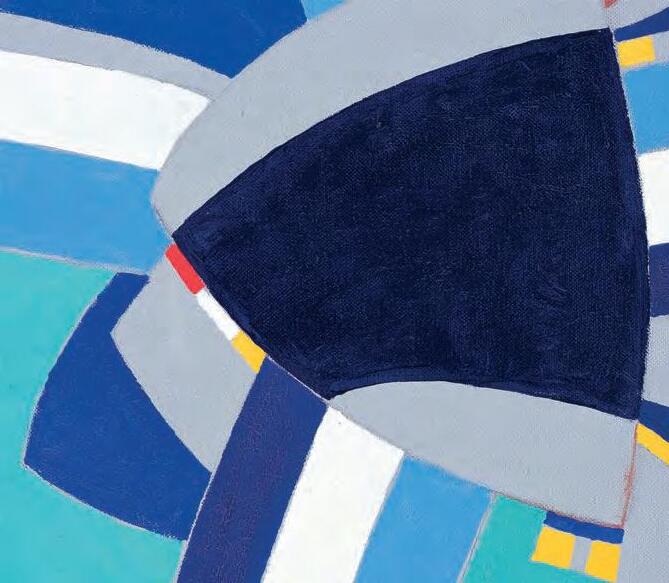
Gilot was born in France on November 26, 1921, in the Parisian suburb of Neuilly-sur-Seine. Prior to meeting Salk, she had a well-known 11-year partnership with fellow artist Pablo Picasso, then 40 years her senior, with whom she had two children, Claude and Paloma. Gilot’s youngest child, Aurelia, was born during Gilot’s marriage to French artist Luc Simon. After marrying Salk, Gilot maintained studios in New York, Paris, and California. The studios served as a vital international presence in art circles and the scientific community for 25 years.
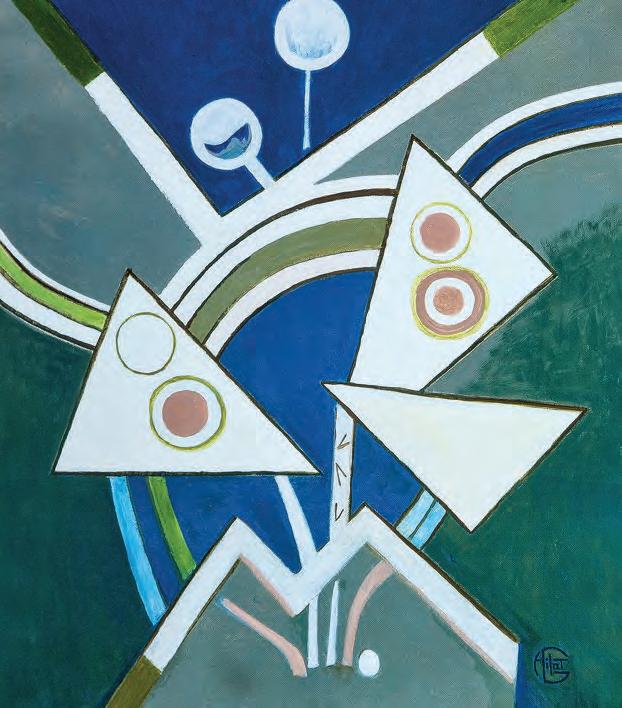
Although Gilot returned to New York following Salk’s death in 1995, she maintained her support of the Salk Institute, most notably serving as Honorary Chair of Symphony at Salk—the Institute’s premier annual fundraising event— starting from its inauguration in 1996 and continuing every year since. She also generously contributed original pieces of art that have served as backdrops for each concert under the stars; each summer, Gilot’s paintings line the wroughtiron fence to the left and right of the travertine steps leading to Salk’s iconic Courtyard.
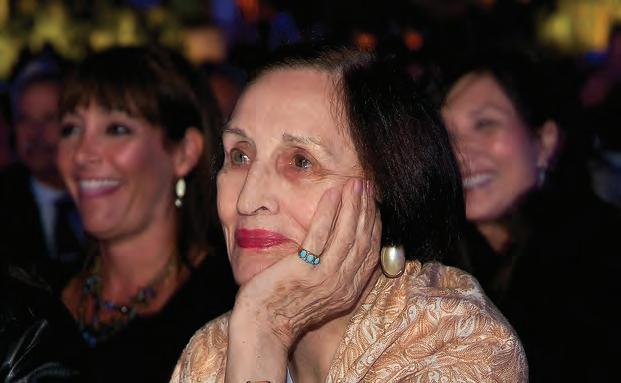
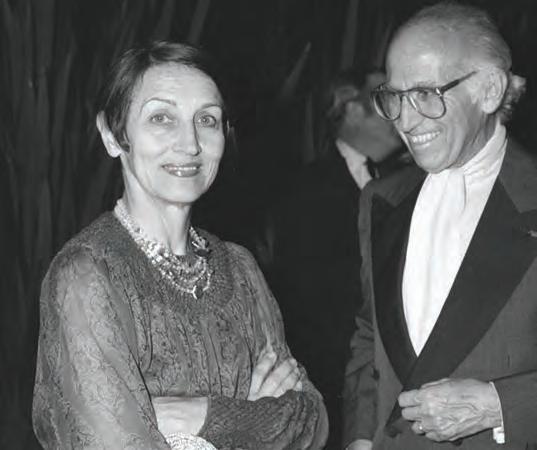
The display not only serves as a colorful entry point for Symphony attendees but pays an homage to Gilot, whom the world knows best as a renowned painter but whose connection to Salk and its community runs much deeper as one of its most dedicated supporters and closest friends for the past 54 years.
Gilot is survived by her three children, Claude, Paloma, and Aurelia, as well as four grandchildren.
Gilot with husband, Jonas Salk.
29 INSIDE SALK FALL 2023 WWW.SALK.EDU
Above: Gilot attending Symphony at Salk, 2013; Alchemy, 36 ¼ x 28 ¾, 2013. From the collection of F. Gilot.
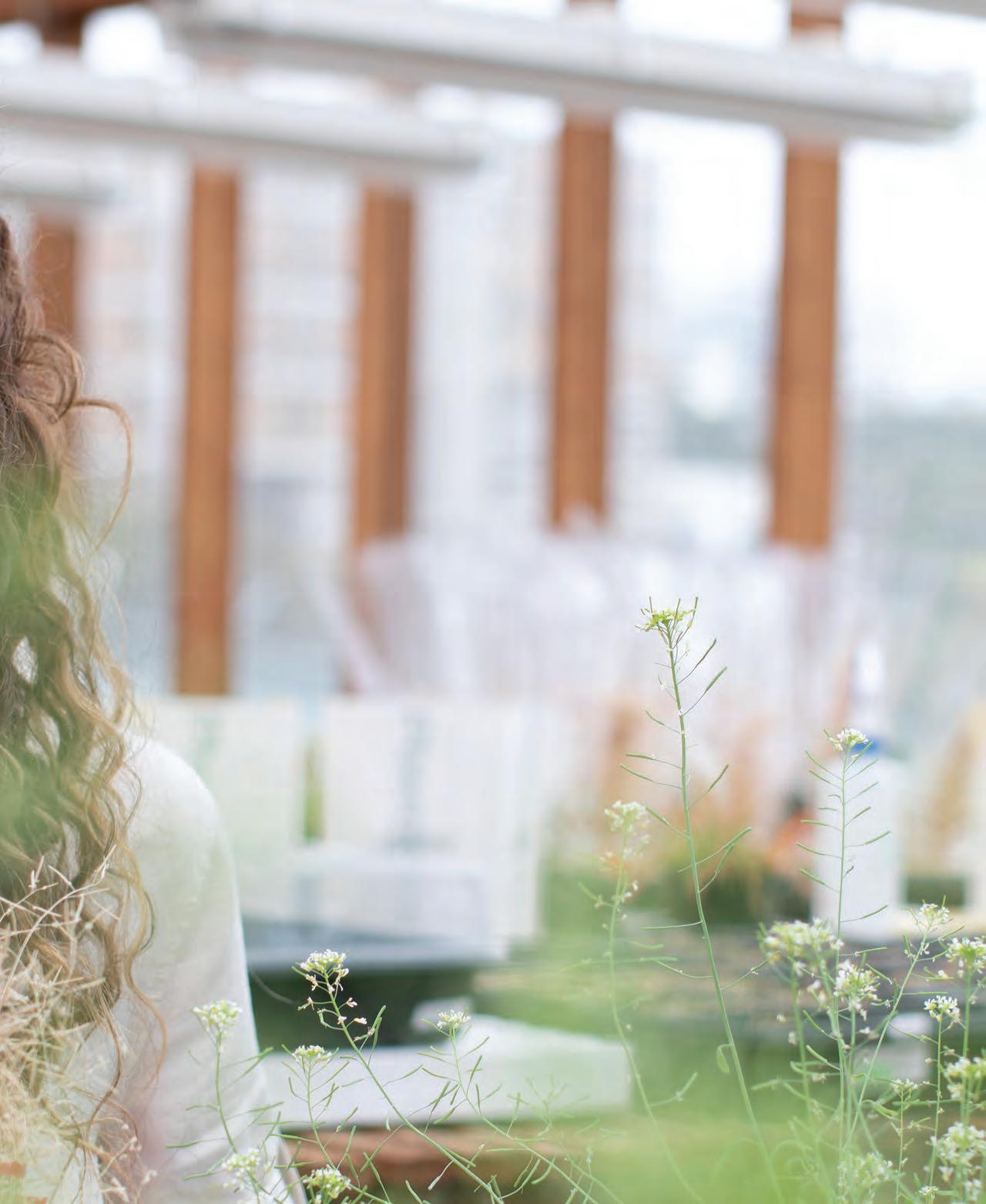

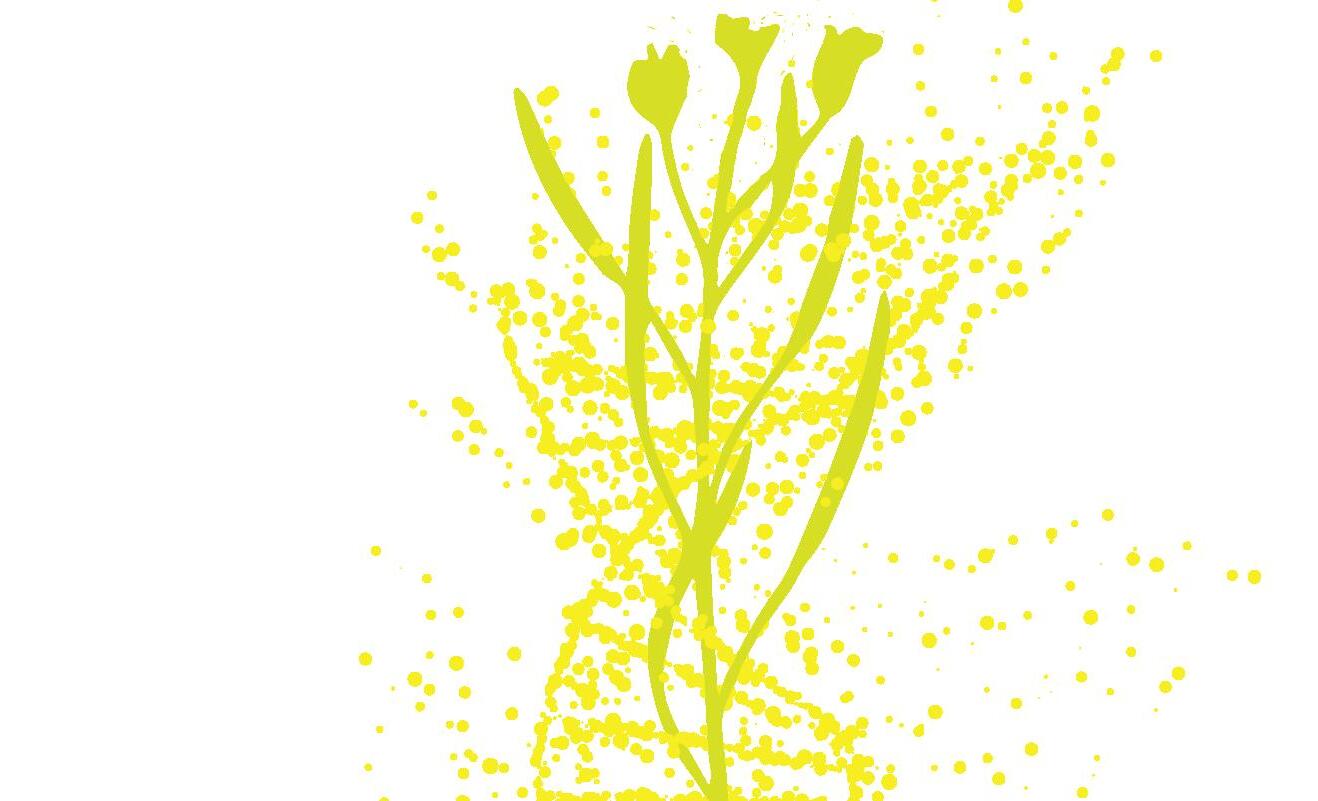
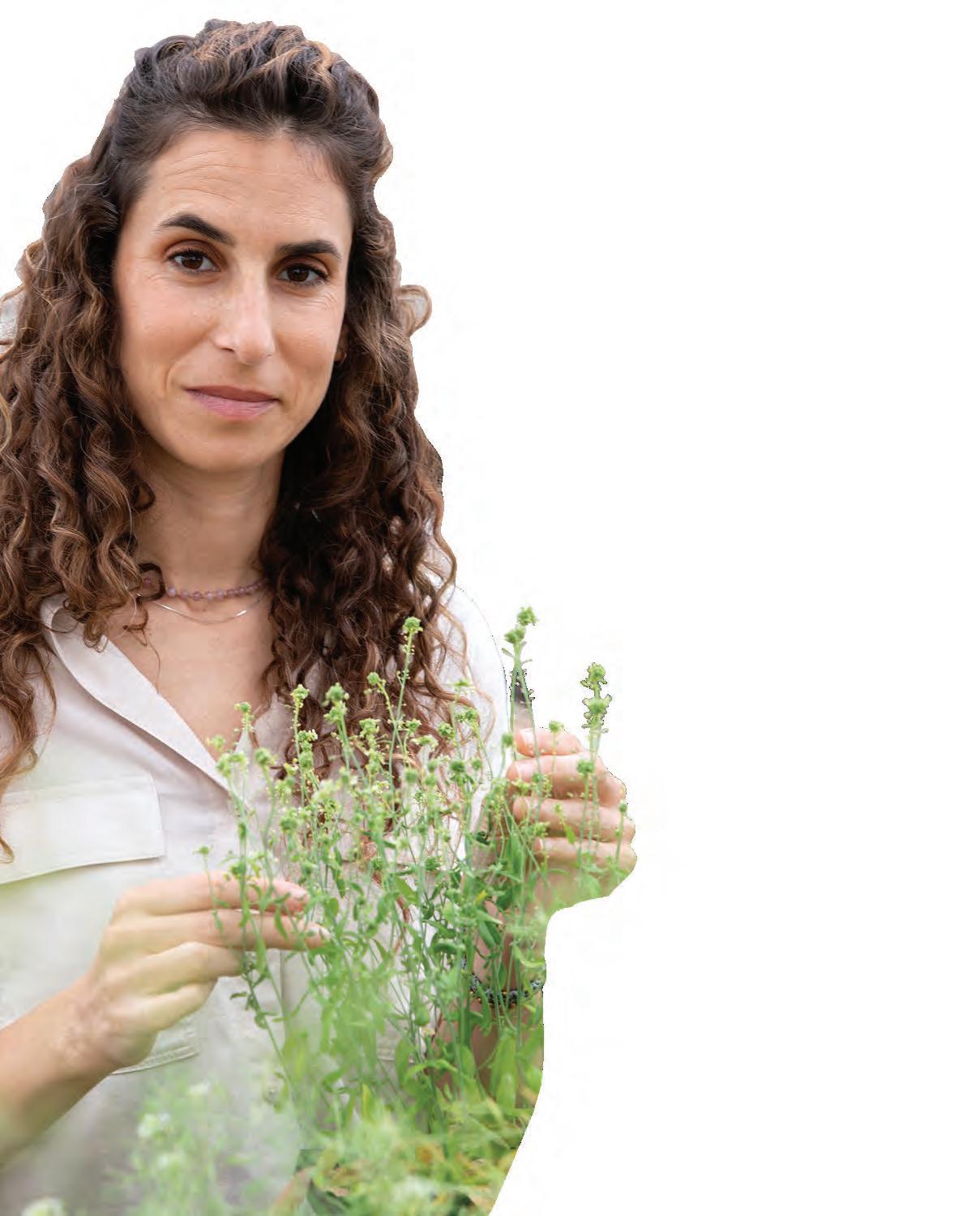
30 INSIDE SALK FALL 2023 WWW.SALK.EDU
Illouz-Eliaz grew up in Israel, near the border with Lebanon, where high-pitched sirens periodically drove her family into bomb shelters for safety. Anxious to provide the best education, her parents enrolled her in school in a nearby kibbutz—a small, collectivist community unique to Israel—beginning in kindergarten. Although the kibbutz provided an enriching environment, Illouz-Eliaz had to confront a new, invisible border between herself and her classmates. They were born and raised in the kibbutz and had a sense of community that wasn’t a given for her.
The kibbutz’s values inspired Illouz-Eliaz, who adopted a strong affinity for community. As she grew older, arts and humanities became a natural outlet for her curiosity. In high school, she chose to major in film and communication studies. In her senior year she directed a film, which she describes as her first leadership role.
After high school, Illouz-Eliaz joined the Israeli Defense Forces, the national army that requires Israeli women to serve for two years. She served a total of five years as an officer, finishing her time in the reserves with the rank of captain. At the end of her service, she planned to take a year off and then study business management—instead, she accidentally fell in love with plant science.
“I was hoping to turn my brain off for a year working outside in agricultural fields, but that’s not exactly what happened,” says Illouz-Eliaz. “I was harvesting tomatoes for a lab that was studying tomato genetics at the Hebrew University of Jerusalem, but I found myself constantly asking the graduate students questions about their work; I realized that I was genuinely curious about plant biology.”
Illouz-Eliaz started a joint geology and biology bachelor’s program at the Ben-Gurion University of the Negev but soon realized that she wanted to focus on plants. So she returned to the Hebrew University to pursue her bachelor’s degree in plant biology. She enjoyed it so much, she stayed for her graduate studies.
“When I started my PhD, I realized how fulfilling research could be; I loved asking questions and designing my own experiments,” says Illouz-Eliaz. “I also learned how to handle failure, which in the lab happens quite often, requiring me to rethink my approach. Becoming a scientist was uncharted territory for me, and I had not been used to failure up until then.”
Illouz-Eliaz’s diverse background gave her a unique perspective in science—her novel ideas, unique approaches, and newfound appreciation for failure made her a force to be reckoned with. She finished her PhD while raising two young daughters and founded a mentoring program to aid female graduate students. Soon after, she joined Ecker’s lab at the Salk Institute.
“When I finished my PhD, my goal was to eventually run my own lab. That meant committing to postdoctoral research abroad,” says Illouz-Eliaz.
“After meeting Joe and seeing the Salk campus, my decision was easy. Not only is Joe doing cutting-edge research, but he is a really good person, which for me is most important.”


Since joining Salk in 2020, Illouz-Eliaz has transitioned from studying tomatoes to a small model plant from the mustard family called Arabidopsis thaliana , which she uses to learn how plants recover from drought conditions. A major effect of global climate change is higher incidence of extreme weather, like drought, so the creation of droughttolerant crops has become increasingly crucial.


By comparing Arabidopsis gene expression throughout drought and drought recovery, IllouzEliaz found a dynamic process marked by unique recovery genes. She discovered that the plant immune system jolts into action at the very start of the recovery process. This immune response, she concluded, is a proactive measure to combat the threat of bacteria entering tiny pores on plants as they reopen post-drought.
Outside of her research, Illouz-Eliaz founded an international mentorship program called WISER. The program facilitates an informal support network for postdoctoral researchers to speak with senior scientists, who share their experience and knowledge about academia and potential industry careers. Currently, more than 300 female Israeli postdoctoral researchers use WISER for networking and support.
“In the journey of exploration and discovery, both failure and open-mindedness play crucial roles— that is the greatest lesson that science has taught me. Don’t fall in love with your hypothesis!” laughs Illouz-Eliaz. “Once you know how to fail, recalibrate, and try again, you can be an example for others to do the same.”
31 INSIDE SALK FALL 2023 WWW.SALK.EDU
In the journey of exploration and discovery, both failure and open-mindedness play crucial roles—that is the greatest lesson that science has taught me.” —Natanella Illouz-Eliaz
RICHARD HEYMAN
From Salk to biotech and back
When Salk Trustee Richard Heyman was a freshman in college, his mother was diagnosed with advanced breast cancer. The available therapies at the time were not promising, and the family braced itself for the worst. She underwent extensive surgery and radiation therapy, and luckily, she survived.
“My mother beat the odds, and later even became a cancer patient advocate,” says Heyman. “Her story continues to inspire my work to develop new cancer therapies.”
Heyman is a scientist and entrepreneur who has founded numerous biotechnology companies aimed at developing new therapies for cancers and other diseases. He currently serves as the vice chair of Salk’s Board of Trustees, but Heyman’s Salk story actually began when he was a National Institutes of Health postdoctoral researcher in the lab of Professor Ronald Evans. After earning his PhD in pharmacology from the
University of Minnesota, Heyman joined the Evans team to study the molecular machinery that controls signaling pathways linked with cancer and other human diseases.
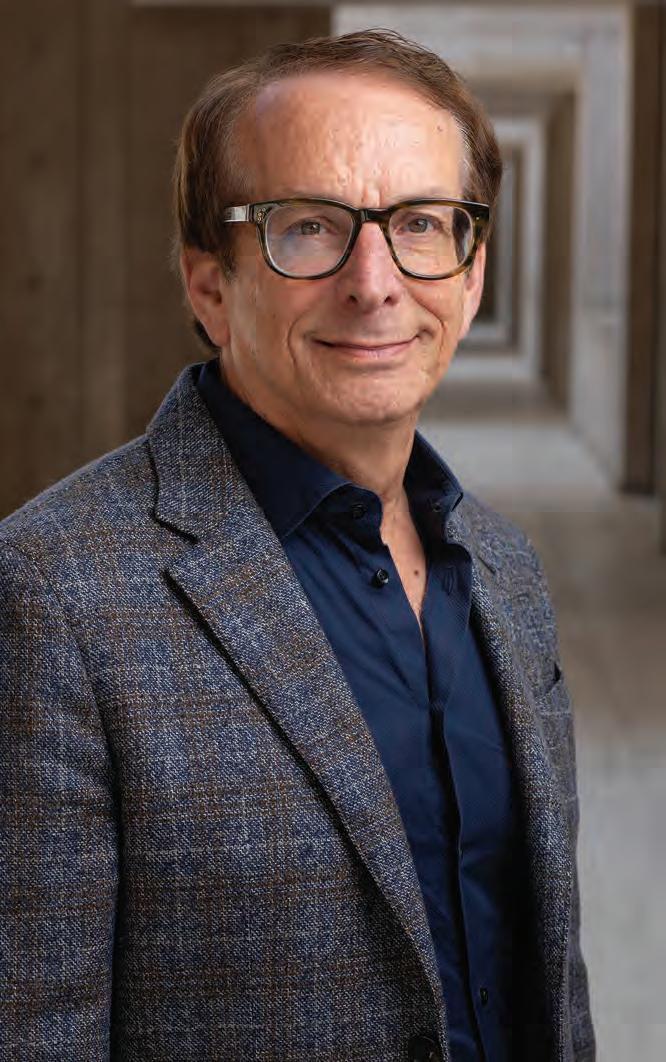

“Ron’s lab was at the cutting edge of understanding how hormones interact with receptors within the cell. Their findings were providing novel insights into normal physiology as well as disease states, such as cancer,” says Heyman. “His lab was the place to be!”
Heyman came to Salk with the goal of becoming a professor. However, during his postdoctoral studies, he learned about the practical applications of Evans’ research in drug discovery. Evans founded Ligand Pharmaceuticals, and Heyman, in partnership with Evans, became involved in the biotech venture. He
ALUMNI JOURNEYS 32 INSIDE SALK FALL 2023 WWW.SALK.EDU
RICHARD HEYMAN
initially served as a consultant, leveraging Evans’ groundbreaking discoveries to develop new therapies for cancer and a host of hormone-driven diseases and later joined the company’s research team.
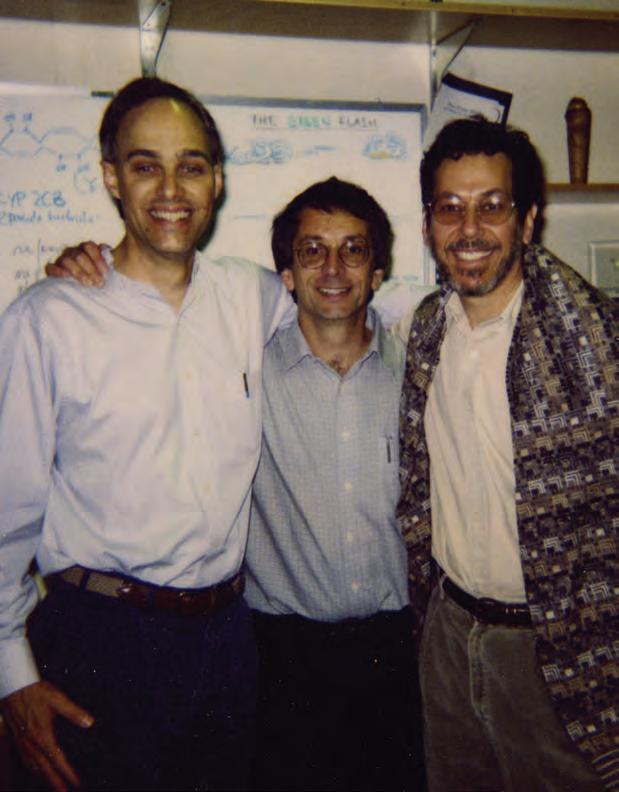
“I loved the biotech world, where I could build and work with amazing multidisciplinary teams. I had the ability to collaborate with brilliant scientists, like Ron, and apply foundational and basic research to the discovery of new therapies that benefit humankind,” says Heyman. “It was a different path than I had originally intended, but my ultimate goal was still the same—to help people.”
Heyman was later promoted to vice president of research at Ligand, and over the course of his tenure, the Ligand team developed multiple FDA-approved treatments for cancer. Heyman went on to cofound X-Ceptor Therapeutics, Aragon Pharmaceuticals, and Seragon Pharmaceuticals, among others. X-Ceptor focused on the development of treatments for metabolic diseases, while Aragon and Seragon both focus on hormone-dependent cancers, including breast cancer and prostate cancer (one of these therapies, Erleada, is now FDA-approved for the treatment of prostate cancer).
Heyman’s efforts have earned him numerous awards, including the Ernst and Young San Diego Regional Entrepreneur of the Year award, the UCSD Rell Sunn

Award, and the Endocrine Society Outstanding Innovation Award. He is also the author or inventor of more than 125 publications and patents.
“Salk was such an impactful place for me,” says Heyman. “I was delighted when one of Salk’s former presidents reached out to ask if I would serve as a Trustee. It was, and still is, a true honor.”
Heyman originally began serving as a member of the Salk Board of Trustees. Now, in his role as vice chair, he works closely with Salk’s leadership and other Board members to support Salk’s mission of “big science”— large-scale, innovative approaches that solve societal problems. “You have to ask big questions if you want big answers,” says Heyman.
“The future of Salk is bright. We need to continue to unlock the secrets of life for the benefit of humankind. And I’m really excited about supporting the young scientists at the Institute. These young scientists are the future of Salk.”
“I had the ability to collaborate with brilliant scientists, like Ron [Evans], and apply foundational and basic research to the discovery of new therapies that benefit humankind. It was a different path than I had originally intended, but my ultimate goal was still the same—to help people.”
RICHARD HEYMAN
33 INSIDE SALK FALL 2023 WWW.SALK.EDU
From left: David Mangelsdorf, Richard Heyman, and Ronald Evans, 1998. Credit: Salk Institute
SPOTLIGHT
Professor Susan Kaech elected to American Academy of Arts and Sciences
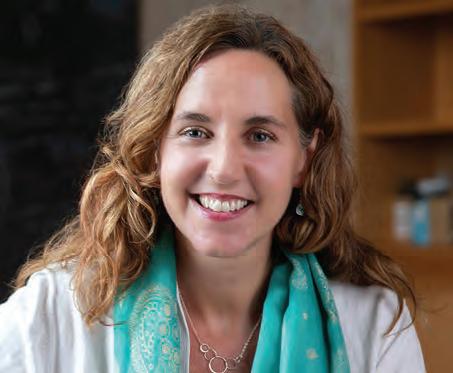
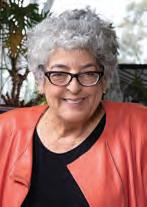
Kaech, director of the NOMIS Center for Immunobiology and Microbial Pathogenesis, has been elected to the American Academy of Arts and Sciences. She shares the honor with some of the world’s most accomplished leaders from science and technology, business, public affairs, education, the humanities, and the arts. Kaech and the new class of nearly 270 members will be inducted at a formal ceremony on September 30, 2023, at the Academy’s headquarters in Cambridge, Massachusetts.
Kavli Small Equipment Grants

Seven Salk faculty members received 2023 Kavli Small Equipment Grants, which provide funds to buy or build small equipment designed to strengthen research capacity and capability. The grant has a total funding amount of $200,000, and awards range from a minimum of $10,000 up to $100,000. This year, the research area focus was labs working on neuroscience, particularly Alzheimer’s disease, as well as cancer research.
Kaech, who holds the NOMIS Chair, is an immunologist who has contributed significantly to the understanding of how long-term immunity forms. Specifically, she helped establish the modern understanding of how and when memory T cells form. Memory T cells are critical for maintaining long-term immunity during acute and chronic infections and can be suppressed in cancer. Kaech identified several genes and signaling molecules critical for memory T cell generation during immune responses. She also helped establish the field of cancer immunometabolism by discovering that the metabolic interplay between tumor and immune cells, as well as changes in nutrient availability, can lead to metabolic immune suppression in tumors. Her findings have solidified the framework for understanding how memory T cells form during infection and may lead to new therapeutic interventions for cancer in the future.
Kaech is also a Fellow of the American Association for the Advancement of Science and has received numerous awards, including a Howard Hughes Medical Institute Early Career Scientist award, the National Institutes of Health Presidential Early Career Award for Scientists and Engineers, the Burroughs-Wellcome Fund Career Award in the Biosciences, and the Damon Runyon-Walter Winchell Cancer Research Fellowship, among others. She was also recently elected to the American Association of Immunologists Council, which serves as the largest and most influential organization to advance the knowledge of immunology and medical research in the country.
The three funded projects are:
The development and characterization of sonogenetic tools (the use of ultrasound to manipulate cells)
• A collaboration between Professors Joanne Chory, Sreekanth Chalasani, and Satchin Panda
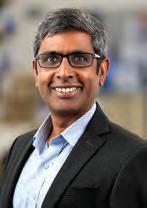
 JOANNE CHORY SREEKANTH CHALASANI SATCHIN PANDA
JOANNE CHORY SREEKANTH CHALASANI SATCHIN PANDA
34 INSIDE SALK FALL 2023 WWW.SALK.EDU
Leading through innovation and collaboration
Launched in 2006 from the forwardthinking minds of then-Board Chair Irwin Jacobs and his wife, Joan, Salk’s Innovation Grants are a vital program to continue supporting emerging science. The grants are designed to fund out-of-the-box ideas that hold significant promise but do not yet have the track record to gain support from more traditional funding sources.
The Collaboration Grant Program was launched in 2019 to foster new collaborative efforts between Salk scientists. Inspired by the success of the Innovation Grant Program, these awards support teamscience approaches to tackling important challenges, laying the foundation for large research grants involving multiple Salk labs.
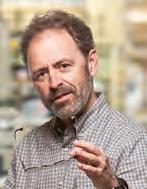
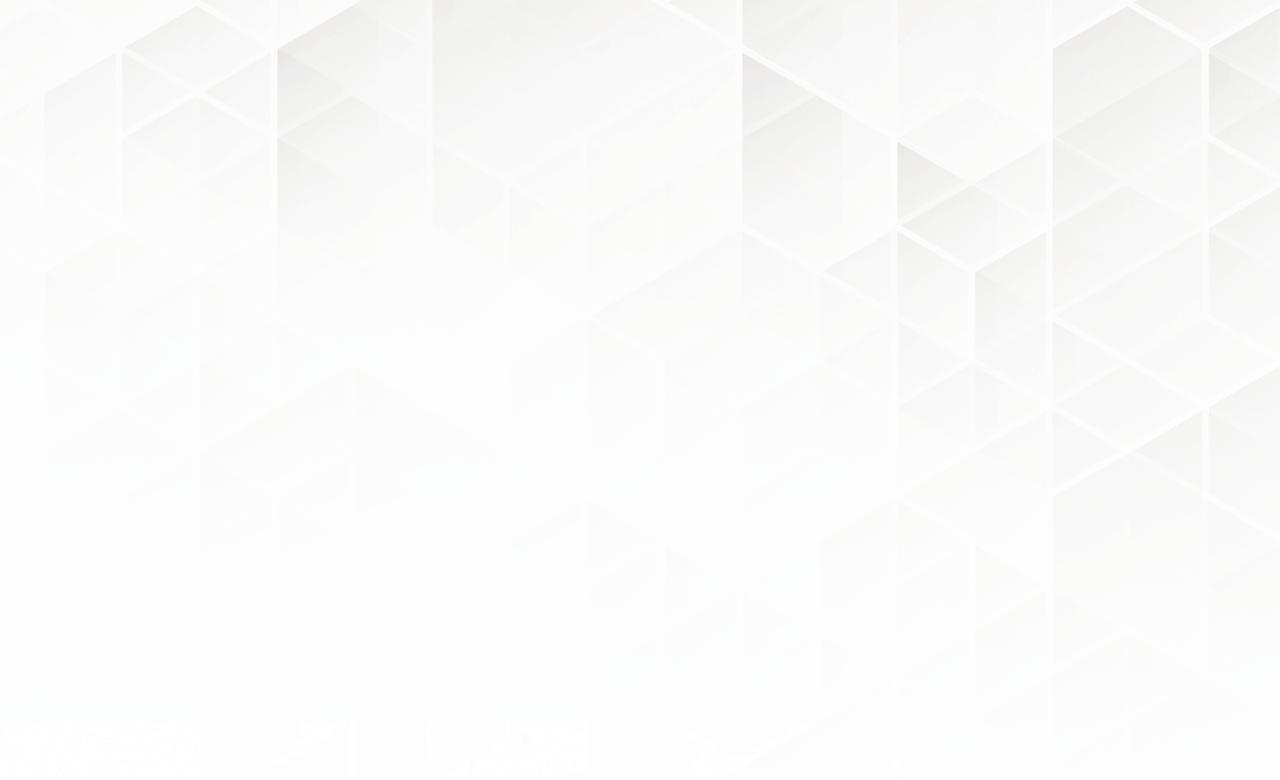
To better understand the connections among chromatin modifications, genome organization, and gene regulation in plants, Associate Professor Julie Law and Assistant Professor Jesse Dixon will use a genomic analysis technique called Hi-C to explore how genetically altered chromatin states impact genome organization.

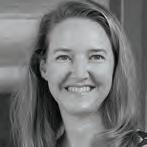
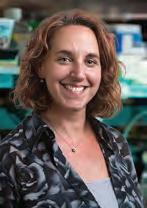
Efficient delivery of nucleic acids and proteins into cells using a pulse of electricity
• A collaboration between Associate Professor Graham McVicker and Professors Susan Kaech and Marc Montminy
Professor Christian Metallo, Assistant Professor Dannielle Engle, and Salk Fellow Talmo Pereira will build AI-based models to relate changes in mouse behavior and diet to pancreatic cancer progression and whole-body physiology. Their findings will further AI application in cancer treatment while improving our scientific understanding of diet and chemotherapy, which are key factors important to all cancer patients.
Uncovering deep spinal and brain circuit dynamics with advanced imaging techniques
• Associate Professor Axel Nimmerjahn

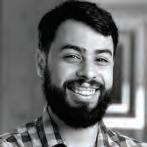
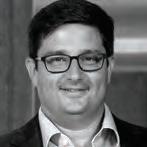
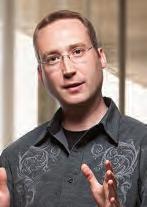
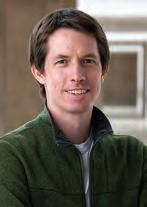 GRAHAM M cVICKER SUSAN KAECH MARC MONTMINY AXEL NIMMERJAHN
2023 Innovation Grant
2023 Collaboration Grant
JULIE LAW
CHRISTIAN METALLO
JESSE DIXON
DANNIELLE ENGLE TALMO PEREIRA
GRAHAM M cVICKER SUSAN KAECH MARC MONTMINY AXEL NIMMERJAHN
2023 Innovation Grant
2023 Collaboration Grant
JULIE LAW
CHRISTIAN METALLO
JESSE DIXON
DANNIELLE ENGLE TALMO PEREIRA
35 INSIDE SALK FALL 2023 WWW.SALK.EDU
These five faculty members have demonstrated leadership in their disciplines, pushing the boundaries of basic scientific research. Assistant Professors Sung Han, Dmitry Lyumkis, and Graham McVicker were promoted to associate professors, and Associate Professors Sreekanth "Shrek" Chalasani and Ye Zheng were promoted to professors. The promotions were based on Salk faculty and nonresident fellow recommendations and approved by Salk’s president and Board of Trustees on April 21, 2023.
Dmitry Lyumkis, holder of the Hearst Foundation Developmental Chair, investigates the mechanisms by which biological invaders (pathogens), like viruses, interplay with their hosts to establish and maintain infection. His lab uses multidisciplinary biophysical techniques centered on cryo-electron microscopy to understand how viral and host proteins assemble, interact, and produce diverse functional outcomes. Understanding the form and function of proteins helps unravel the complex roles they play in viral infections and in human diseases, such as cancer, and informs therapeutic strategies to target those diseases. He recently determined the molecular structure of HIV Pol, a protein that plays a key role in the late stages of HIV replication when the virus begins spreading throughout the body.
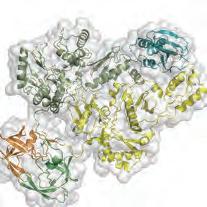
Sung Han, holder of the Pioneer Fund Developmental Chair, works to understand how the brain recognizes environmental threats and sends signals that change physiology, metabolism, behavior, and emotion to avoid those threats. When this threat signaling pathway goes awry, it can create hypersensitivity, a characteristic of neuropsychiatric disorders, such as post-traumatic stress disorder (PTSD), as well as other panic and anxiety disorders. He recently uncovered a molecular pathway that initiates a fear response and described the connection between feelings of fear and breathing rhythm. Han also works to understand the science behind overdoses, which led to his discovery of a group of neurons that play a key role in the disrupted breathing that is often characteristic of overdose deaths.
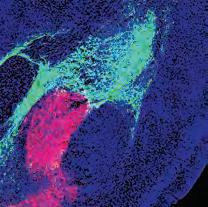
SPOTLIGHT
36 INSIDE SALK FALL 2023 WWW.SALK.EDU
Salk promotes five faculty members in genetics, structural biology, immunobiology, and neuroscience
Graham McVicker, holder of the Frederick B. Rentschler
Developmental Chair, studies how human genetic differences, known as genetic variants, affect traits and diseases. In the past decade, thousands of genetic variants have been associated with human diseases. However, the function of most of these variants is unknown and difficult to determine, since they are often in what are called “noncoding” portions of the human genome. Noncoding regions do not provide instructions for making proteins that enable cell function. Instead, research suggests they influence when and where (under which conditions and in which cell types) specific proteins are made by the “coding” portions of the genome. McVicker uses CRISPR and computational analysis to understand the function of each genetic variant in every cell type, with a particular focus on understanding cancer and diseases related to the immune system. His long-term goal is to reveal novel disease mechanisms that could support the development of personalized therapies. He was recently awarded a Curebound Discovery Grant and a Genomic Innovator Award.
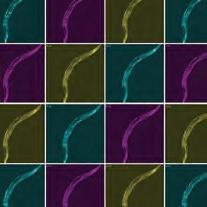

Sreekanth Chalasani studies how animals make complex strategic decisions, such as balancing the quest for food with territorial defense and predator avoidance. His work has revealed the brain circuits that underlie these complex decisions. He also uses worm and mouse models to pinpoint the differences between healthy and dysfunctional brains, make inferences about the human brain, and to shed light on conditions like autism spectrum disorder, post-traumatic stress disorder (PTSD), anxiety, and depression. He recently discovered how hunger signals in the gut communicate with the brain, and identified the cells and connections in the brain that facilitate decision-making. Additionally, he engineered mammalian cells to be activated by sonogenetics, paving the way for other noninvasive versions of deep brain stimulation, pacemakers, and insulin pumps.

Ye Zheng studies the immune system dysfunction that causes inflammation and autoimmune disorders like rheumatoid arthritis, multiple sclerosis, type 1 diabetes, and asthma. Zheng focuses on regulatory T cells, which control immune responses and whose dysfunction has been linked to multiple autoimmune diseases. By looking at the genes that control regulatory T cells, he hopes to find new ways to manage T cell dysfunction and inspire future therapeutics. Recently, Zheng found a new target for alopecia treatment by discovering that regulatory T cells communicate with hair follicles to enable hair regeneration. Additionally, when looking at allergic skin inflammation in mice, he found that obesity changes the molecular underpinnings of allergic reactions—a finding that may have implications for allergies in humans too.
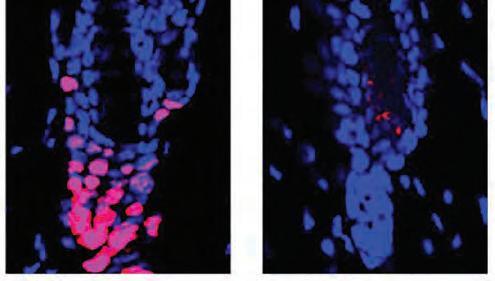
“Sung, Dmitry, Graham, Shrek, and Ye have all made significant advances in their respective fields, with discoveries that span a range of scientific disciplines and reflect the creativity that is central to Salk’s identity. We are eager to see what they accomplish next.”
37 INSIDE SALK FALL 2023 WWW.SALK.EDU
SALK PRESIDENT GERALD JOYCE
Professor Christian Metallo honored with Daniel and Martina Lewis Chair
Professor Christian Metallo has been recognized for his outstanding contributions to advancing science by being named the next holder of the Daniel and Martina Lewis Chair. Professor Geoffrey Wahl previously held this chair position.
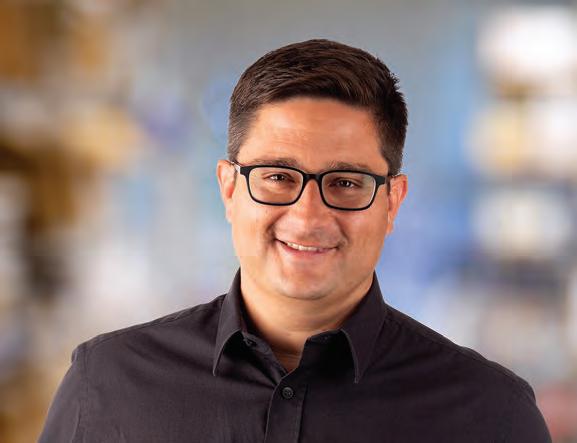
Metallo, who is part of Salk’s Molecular and Cell Biology Laboratory, studies metabolism—how the constant breakdown of energy within cells works and, importantly, doesn’t work. By carefully studying healthy metabolic pathways, disease-causing pathways become clear, such as those that drive cancer progression and vision loss. His research advances the field of metabolism and provides a foundation for the development of metabolismrelated therapeutics. Most recently, Metallo discovered that altered amino acid metabolism significantly contributes to peripheral neuropathy, a condition that is common in people with diabetes. The discovery opens new possibilities for identifying people most at risk for the condition, as well as potential treatment options.
Salk Institute launches collaboration with Autobahn Labs to accelerate drug discovery
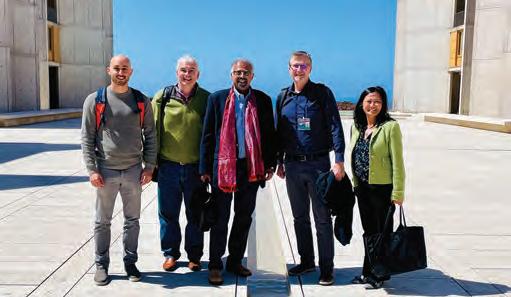
The partnership will also seek to advance promising initial scientific discoveries through the preliminary steps of drug discovery and development. Autobahn Labs will invest up to $5 million per project for Salk discoveries that require access to drug development expertise and state-of-the-art capabilities.

“The strategic and operational support provided by Autobahn Labs will allow us to move forward at an accelerated pace to translate scientific discoveries into new therapeutics,” says Salk President Gerald Joyce. “The beauty of this collaboration is that the most promising findings across different areas of research at Salk will have the opportunity to move from the bench to the development of clinical drug candidates. We hope that this collaboration will lead to new therapeutic options for many areas of unmet medical need.”
Autobahn Labs invests earlier than traditional venture financing models, providing intellectual, financial, and physical capital to advance new scientific discoveries, from novel concept to preclinical drug candidate, with the goal of creating companies foundationally enabled by Salk science. As an added benefit, Salk trainees will have opportunities to learn about the processes of drug discovery, development, and commercialization.
SPOTLIGHT
CHRISTIAN METALLO
38 INSIDE SALK FALL 2023 WWW.SALK.EDU
From left: Dimitre Simeonov, Thomas Novak, and Dushyant Pathak of Autobahn Labs and Richard Schneeberger and Ha Nguyen of Salk’s Office of Technology Development.
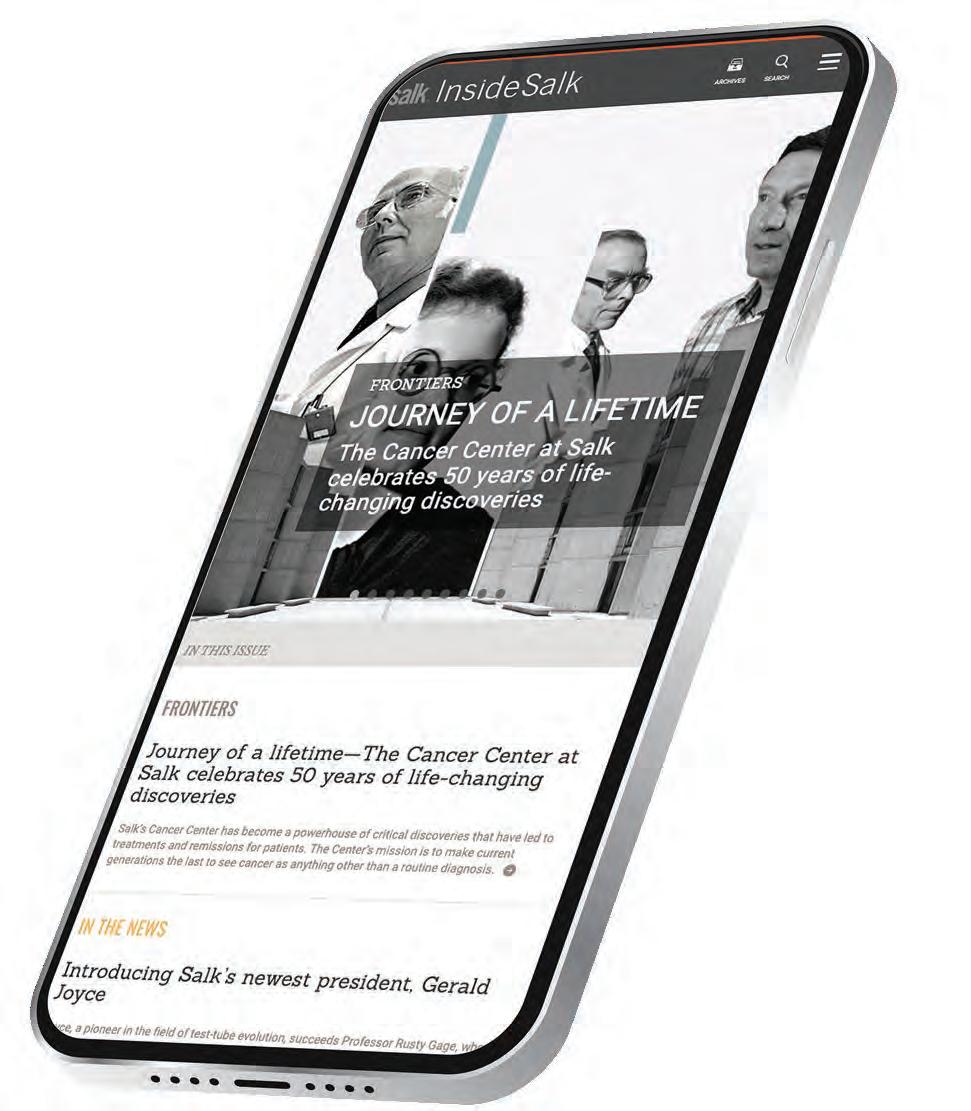
® Stay up to date with Salk by following us on social media. @salkinstitute Engage with our award-winning magazine, Inside Salk, on any device. inside.salk.edu Read it online.
EVENTS
SCIENCE & JUSTICE SERIES
On May 25, Salk held the inaugural event in the new Science & Justice Series, a unique opportunity to learn about the intersection of and contradictions between science and law. During the event, Salk Vice President of Diversity, Equity & Inclusion
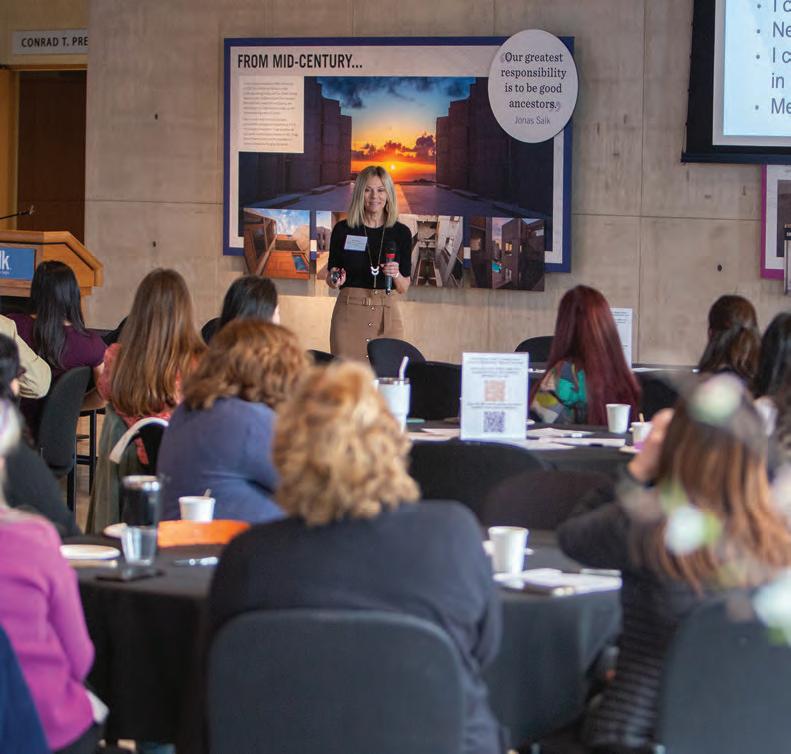

Mallory Zaslav and General Counsel Julia Miller hosted Salk Professor Thomas Albright and civil rights lawyer Peter Neufeld, cofounder of The Innocence Project. They discussed the latest research on visual perception and memory, how that influences forensic identification decisions, and what that means for justice in our criminal legal system.
www.salk.edu/justice202308
SALK HONORS INTERNATIONAL WOMEN’S DAY
On March 7, Salk members gathered to celebrate the achievements women have made socially, economically, culturally, and politically in our world, and challenged participants to embrace equity and broaden and deepen the impact of women. Salk’s Diversity, Equity & Inclusion team and the Salk Women & Science program hosted “Accelerating Women’s Path to Impact,” a networking event that focused on building and leveraging dynamic networks to fuel and bolster career development.
From left: Julia Miller, Thomas Albright, and Peter Neufeld.
WATCH 40 INSIDE SALK FALL 2023 WWW.SALK.EDU
SALK COMMUNITY LEARNS ABOUT THE LEGACY OF JONAS SALK

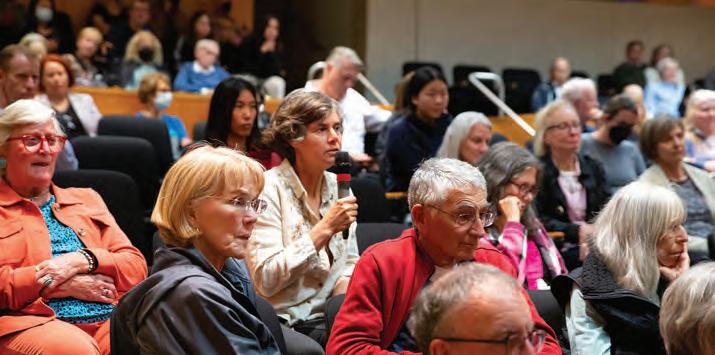
On March 29, the Institute was honored to host Jonathan and Peter Salk, sons of founder Jonas Salk. Jonathan shared personal reflections, writings, and photos of their father. The program included a live chat with former Salk President Rusty Gage and questions from Salk scientists and staff.



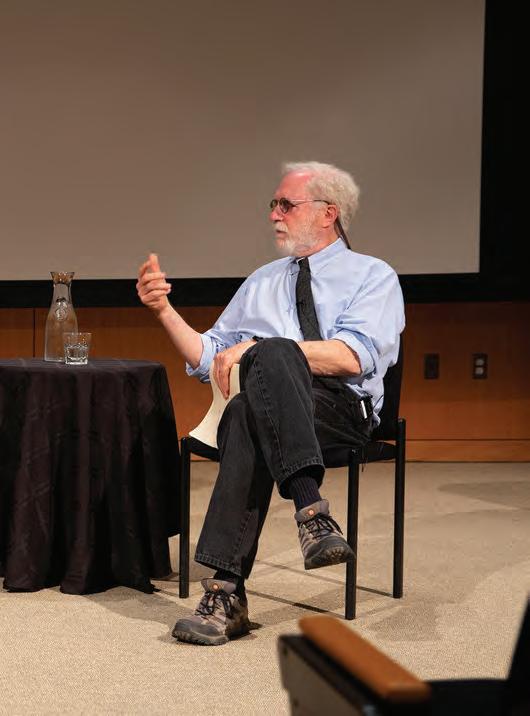 JONATHAN SALK
JONATHAN SALK
41 INSIDE SALK FALL 2023 WWW.SALK.EDU
From left: Gerald Joyce, Jonathan Salk, Peter Salk, and Rusty Gage.
PADRES PEDAL THE CAUSE
In this year’s Padres Pedal the Cause event on April 18, Team Salk Cancer Center raised more than $44,000 for local cancer research, which includes projects on Salk’s campus. Pedal the Cause is Curebound’s largest annual fundraising event, with participants biking, running, walking, and spinning to support cancer research. Since 2013, the event has raised $20 million and funded 73 collaborative research projects in San Diego, including six clinical trials.
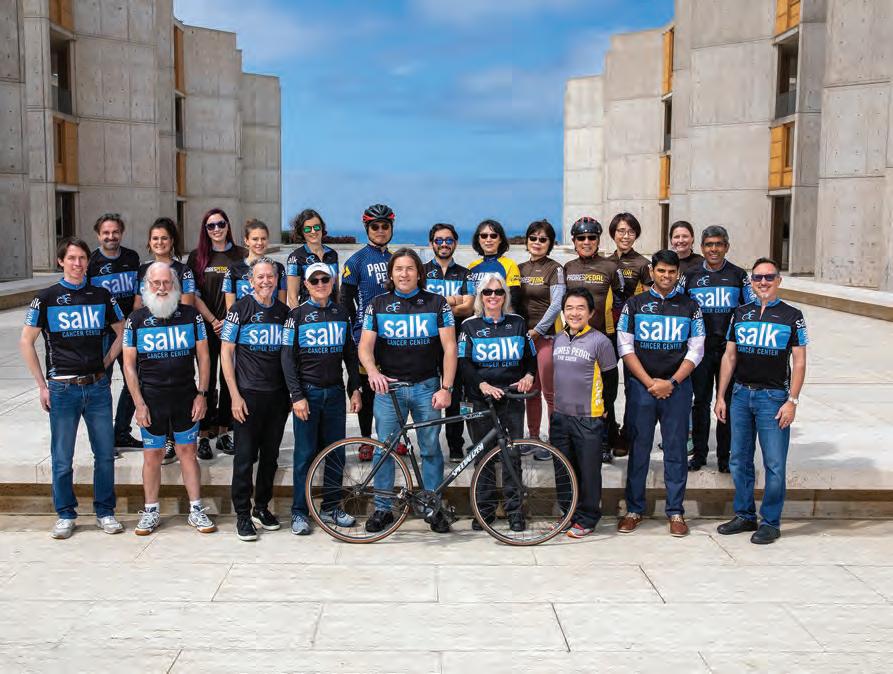
BIG TREE BOOK SIGNING
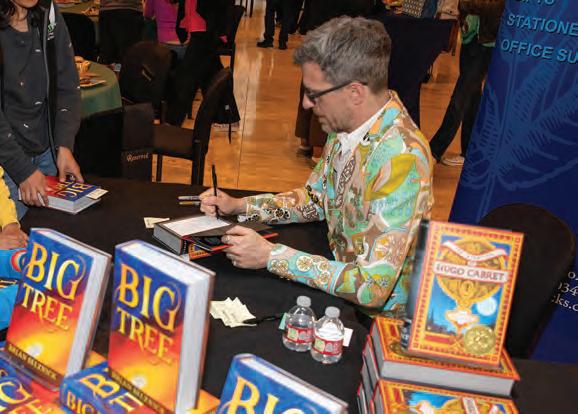
The Salk Institute, Salk’s Harnessing Plants Initiative, and Warwick’s, the country’s oldest continuously family-owned and -operated bookstore, teamed up to host an exclusive book talk and signing featuring acclaimed children’s author Brian Selznick and Salk Professor Joseph Noel on May 8. After the talk, a reception was held while children participated in a seed-planting activity.
LUSTGARTEN WALK FOR RESEARCH ARCH
On March 26, the Lustgarten Foundation hosted Walk for Research, a 1K stroll around the Salk Institute followed by conversation with Salk researchers. The Lustgarten Foundation works to raise the critical funds and awareness needed to transform pancreatic cancer into a curable disease. All proceeds from the event fund lifesaving pancreatic cancer research.

EVENTS
42 INSIDE SALK FALL 2023 WWW.SALK.EDU
Salk Education Outreach
Hands-On Science Education
Jonas Salk founded the Salk Institute with the philosophy that it should both drive scientific breakthroughs and inspire the next generation of elite scientists. Out of Jonas Salk’s vision, the Institute’s Education Outreach program was born. Its mission is threefold:
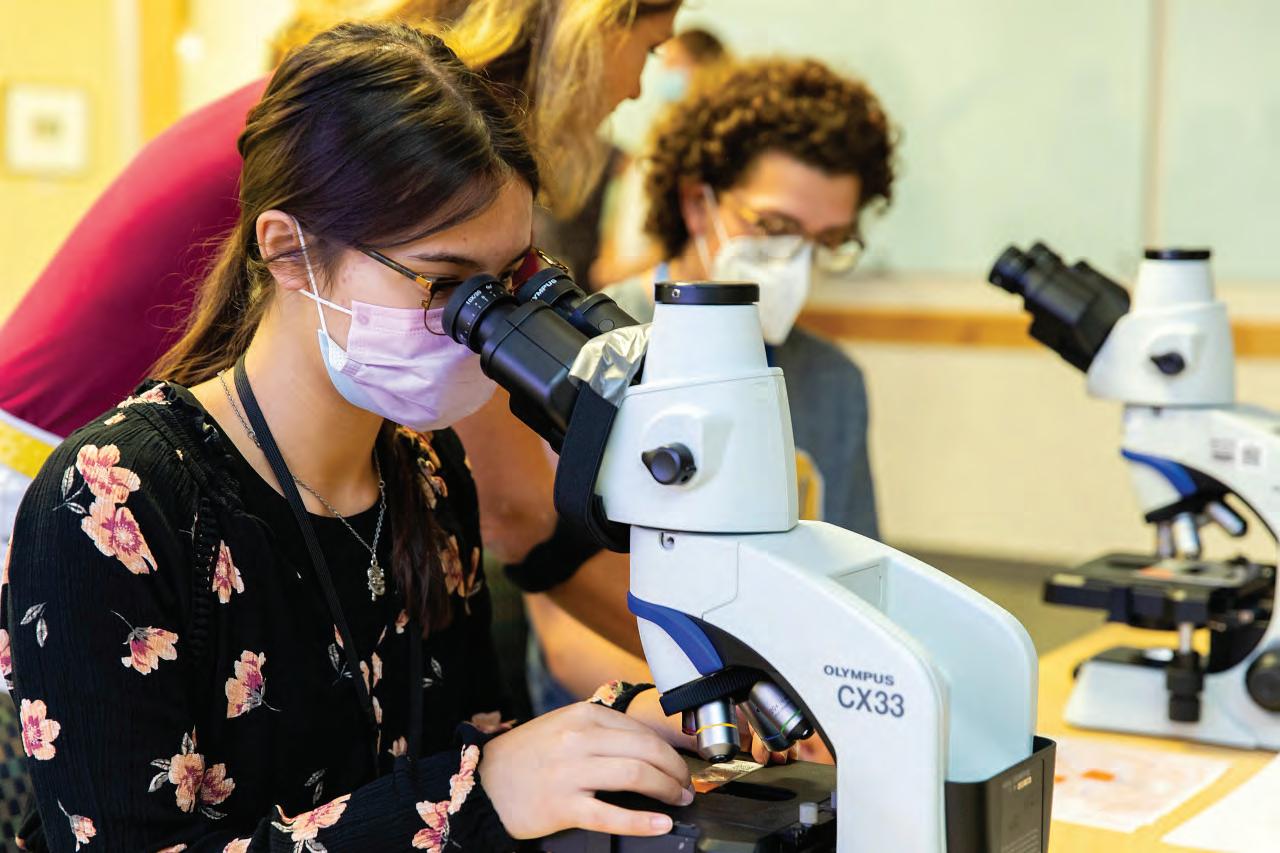
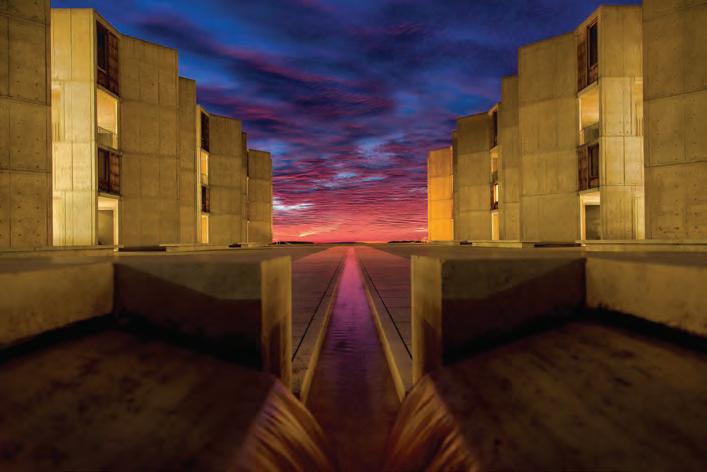
To teach students, teachers, and the community about scientific literacy in addition to the role of basic biological research in our world.
teach inspire promote
To inspire enthusiasm and interest in advanced levels of science instruction, and particularly in science as a career.
To promote public awareness of Salk and the value of basic research as it relates to career readiness, critical thinking skills, and the development of an informed citizenry.
Salk Education Outreach serves San Diego County students, teachers, and other community members through its programs: Mobile Science Lab, Heithoff-Brody High School Summer Scholars, March of Dimes High School Science Day, SciChats@Salk, and the Ellen Potter Research Connections for Teachers Symposium. These programs are offered at no cost to students, teachers, and schools, thereby reducing economic barriers to high-quality STEM education. Over the past 40 years, Salk Education Outreach has delivered innovative, engaging STEM learning experiences to thousands of students—a majority of whom come from underrepresented and underserved communities.
To learn more about Education Outreach, please email education@salk.edu

Make a tax-free gift with an IRA
You can give any amount up to $100,000 per year from your IRA directly to the Salk Institute without paying income taxes on the revenue if you are 70 ½ years of age or older. You can also name Salk as a beneficiary of your retirement plan simply by filling out a form with your plan’s administrator. When left to Salk, retirement plan assets pass tax-free, allowing us to put 100 percent of your gift toward new discoveries in healthy aging, neurodegenerative disease prevention, climate change mitigation, and other major global challenges.

People who make a planned gift to Salk in their estate plans become members of our legacy society, Partners in Research.
We look forward to welcoming you as the newest member of this visionary group that invests in the future of science.
To learn more, please contact the Office of External Relations at (858) 453-4100 x2277 or giving@salk.edu.
The power of a scientific legacy.
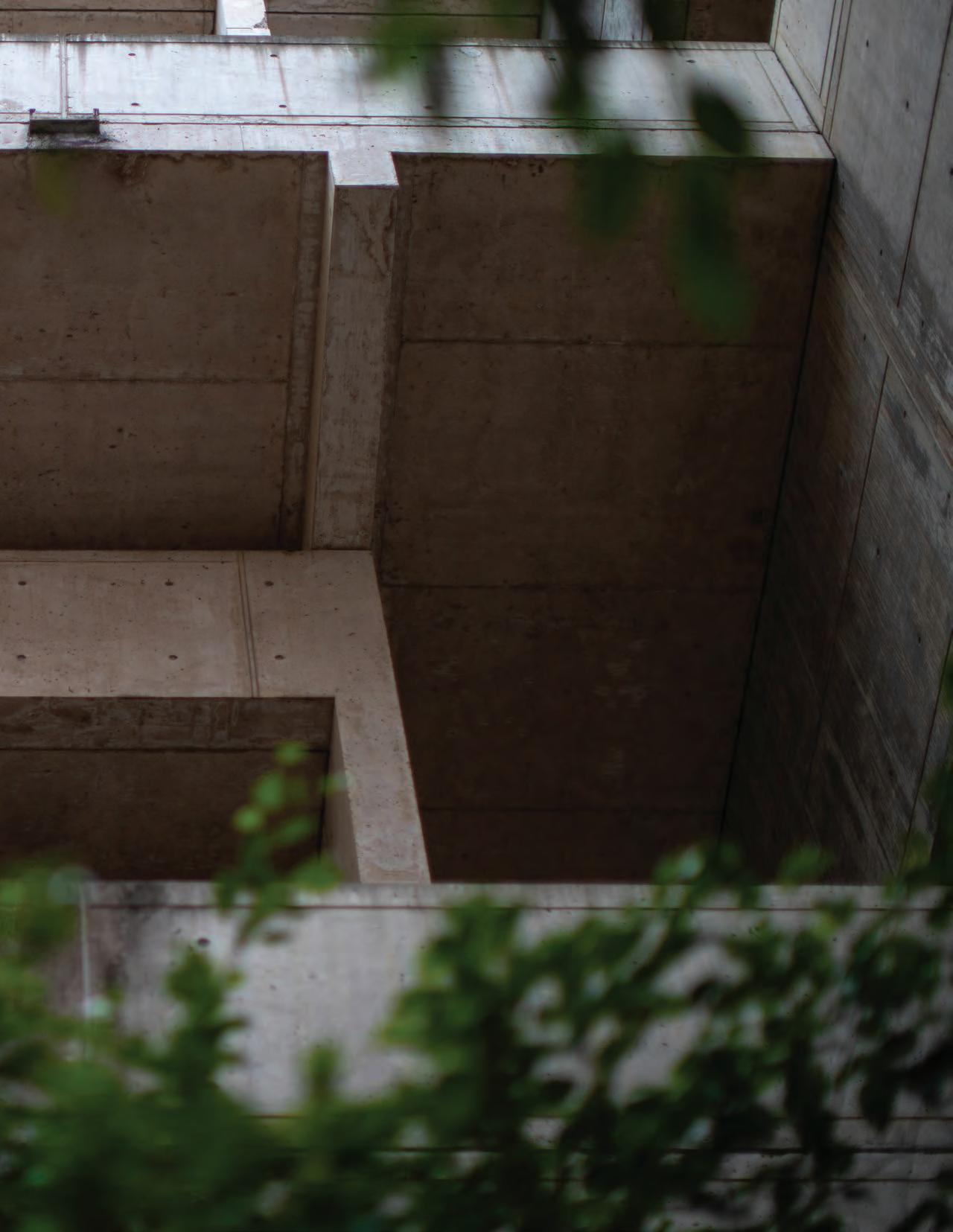
Visit the Salk Institute at www.salk.edu. Inside Salk is published by the Salk Institute for Biological Studies. Please send comments to communications@salk.edu or contact the Communications Department at (858) 453-4100 x1371. Inside Salk is printed on recycled paper. Gerald Joyce President Bryan Robinson Vice President, External Relations Heather Buschman Senior Director, Communications Liz Hincks Senior Director, Graphic and Digital Communications Chanelle Jimenez Director, Internal Communications Brittany Fair Manager, Scientific Communications Isabella Davis Science Writer Curtis Ippolito Development Writer John McDonagh Senior Web Developer Stephanie Harada Digital & Web Designer Chris Keeney Photographer Aaron Howard Manager, AV and Video Communications Mike Jeffs Multimedia Producer Kent Schnoeker Senior AV Technician Oliver Yambao Senior Graphic Designer Alex Endsley Graphic Designer Amy Cao Science Illustrator Victoria Johnson Manager, Media Relations Elizabeth Noguera Communications Project Administrator Kara Sjoblom-Bay Communications Administrator
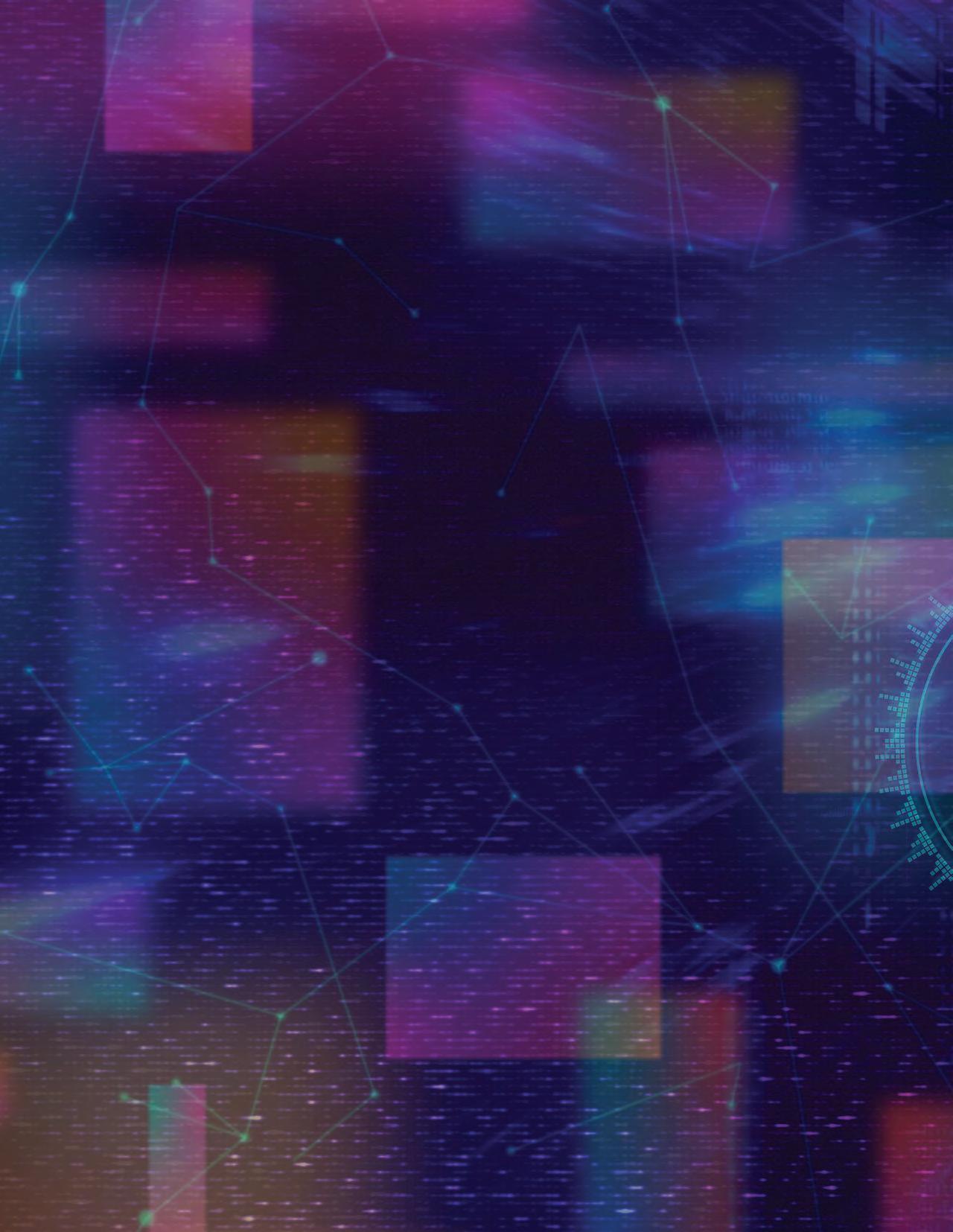
Follow us on: THERE ARE MANY WAYS TO SUPPORT SALK. For detailed information on opportunities, please email giving@salk.edu, call (858) 453-4100 x2277, or visit www.salk.edu/support. VISIT US ONLINE AT inside.salk.edu. Salk Institute has received the highest rating 11 consecutive times from Charity Navigator, the nation’s foremost charity evaluator. Salk Institute for Biological Studies 10010 N Torrey Pines Rd La Jolla, California 92037-1002 Telephone: (858) 453-4100 www.salk.edu NONPROFIT ORG. U.S. POSTAGE PAID PERMIT NO. 611 SAN DIEGO, CA @salkinstitute












 Above: Neurons in the spinal cord (blue), including those that send signals about pain (green), captured using one of the new wearable microscopes.
Above: Neurons in the spinal cord (blue), including those that send signals about pain (green), captured using one of the new wearable microscopes.



 Left: An immune brain cell (microglia) in a human brain.
Right: Microglia in the novel organoid model with a human brain-like environment. The cells are almost indistinguishable.
From left: John Reynolds, Courtney Glavis-Bloom, and Casey Vanderlip.
Normally, the different parts of the synaptic complex grow and shrink together. The researchers found evidence that this process can go awry in aging, which may contribute to cognitive impairment.
Left: An immune brain cell (microglia) in a human brain.
Right: Microglia in the novel organoid model with a human brain-like environment. The cells are almost indistinguishable.
From left: John Reynolds, Courtney Glavis-Bloom, and Casey Vanderlip.
Normally, the different parts of the synaptic complex grow and shrink together. The researchers found evidence that this process can go awry in aging, which may contribute to cognitive impairment.






 Left: Lung tissue of mice with LKB1-mutated non-small cell lung cancer. Right: Lung tissue after being treated with both trametinib and entinostat showing smaller and fewer tumors.
Left: Lung tissue of mice with LKB1-mutated non-small cell lung cancer. Right: Lung tissue after being treated with both trametinib and entinostat showing smaller and fewer tumors.





























 Gilot’s artwork is digitally projected on the Courtyard towers during an annual Symphony at Salk event.
Gilot’s artwork is digitally projected on the Courtyard towers during an annual Symphony at Salk event.




















 JOANNE CHORY SREEKANTH CHALASANI SATCHIN PANDA
JOANNE CHORY SREEKANTH CHALASANI SATCHIN PANDA









 GRAHAM M cVICKER SUSAN KAECH MARC MONTMINY AXEL NIMMERJAHN
2023 Innovation Grant
2023 Collaboration Grant
JULIE LAW
CHRISTIAN METALLO
JESSE DIXON
DANNIELLE ENGLE TALMO PEREIRA
GRAHAM M cVICKER SUSAN KAECH MARC MONTMINY AXEL NIMMERJAHN
2023 Innovation Grant
2023 Collaboration Grant
JULIE LAW
CHRISTIAN METALLO
JESSE DIXON
DANNIELLE ENGLE TALMO PEREIRA


















 JONATHAN SALK
JONATHAN SALK








